
When I traveled to Tovar Colony in the city of Aragua, Venezuela, I had the opportunity to tour one of the most emblematic churches in the country. To learn a little bit about my tour, you can visit this post where I wrote about it. Also, I toured the historic center of the iconic German town. For me, one of the places that everyone should visit is the Church of Saint Martin of Tours.
The Church of Saint Martin of Tours stands out for having an exemplary architecture, and it perfectly embodies the German traditions. The façade of the church is white with black-striped decoration.
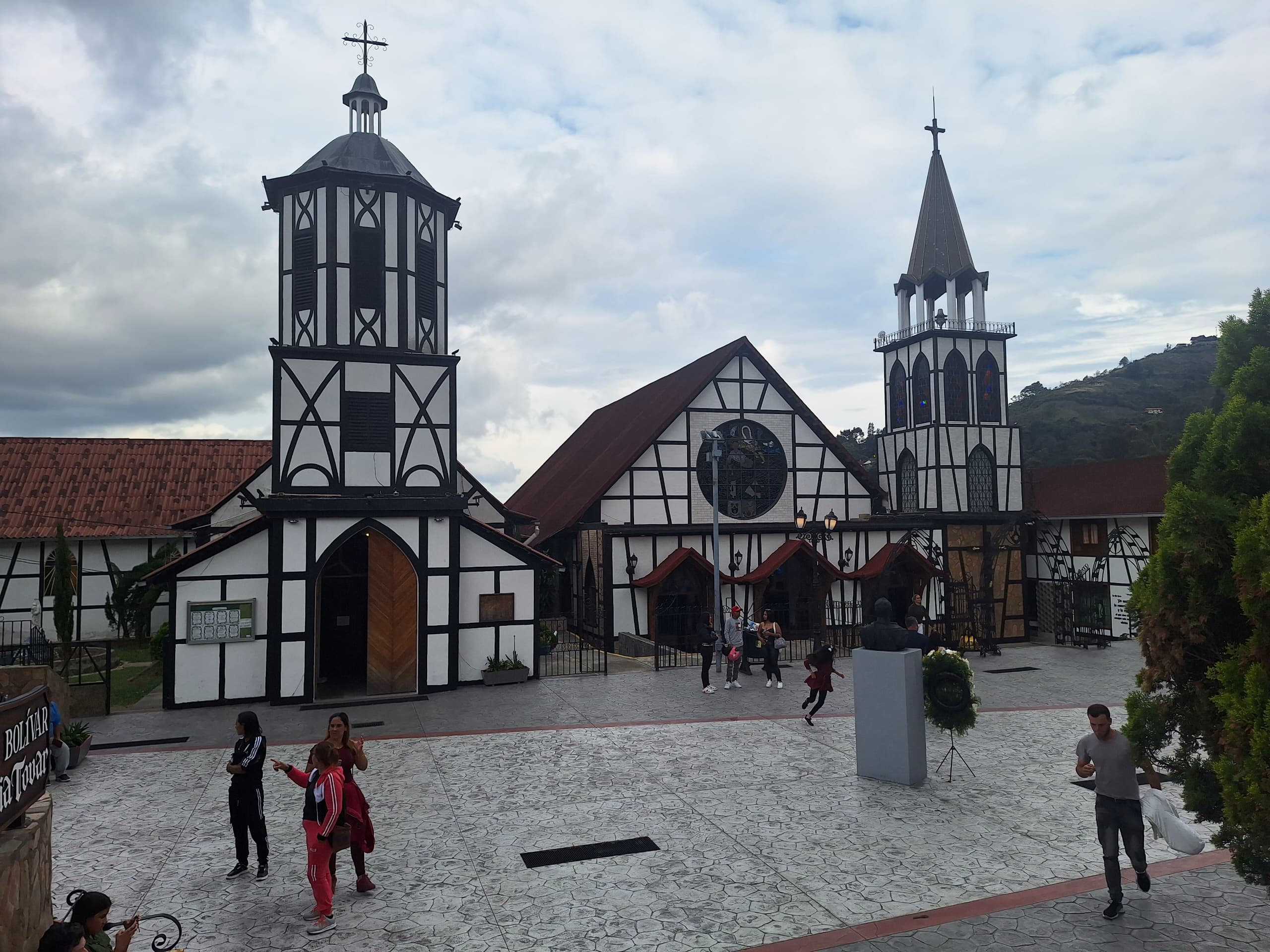
Venezuela has always had a strong bond with the Germans. The territory that once belonged to the King of Spain was also in the hands of the Germans. Hence, the great bond. In addition, this caused Venezuela to have a preponderant Catholic faith. Europeans have always been very important throughout the country.
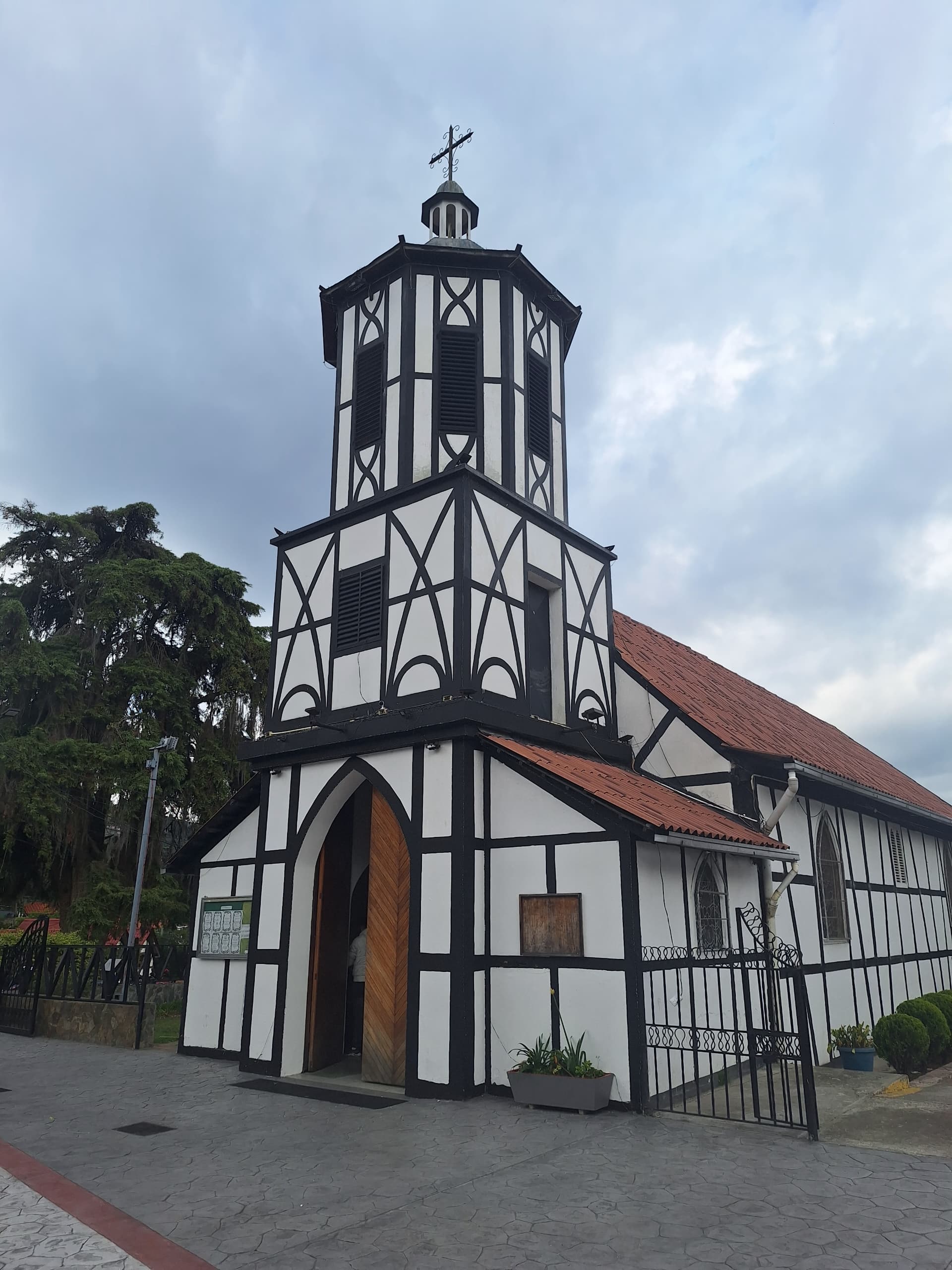
The first church in this place was built in 1843, but as it was in a deteriorated condition, it was rebuilt in 1862 by the Germans who settled in the surroundings (they used the fachwerk system to build the new church). Something very peculiar is that later it suffered several modifications until it reached the state that I show in this post.
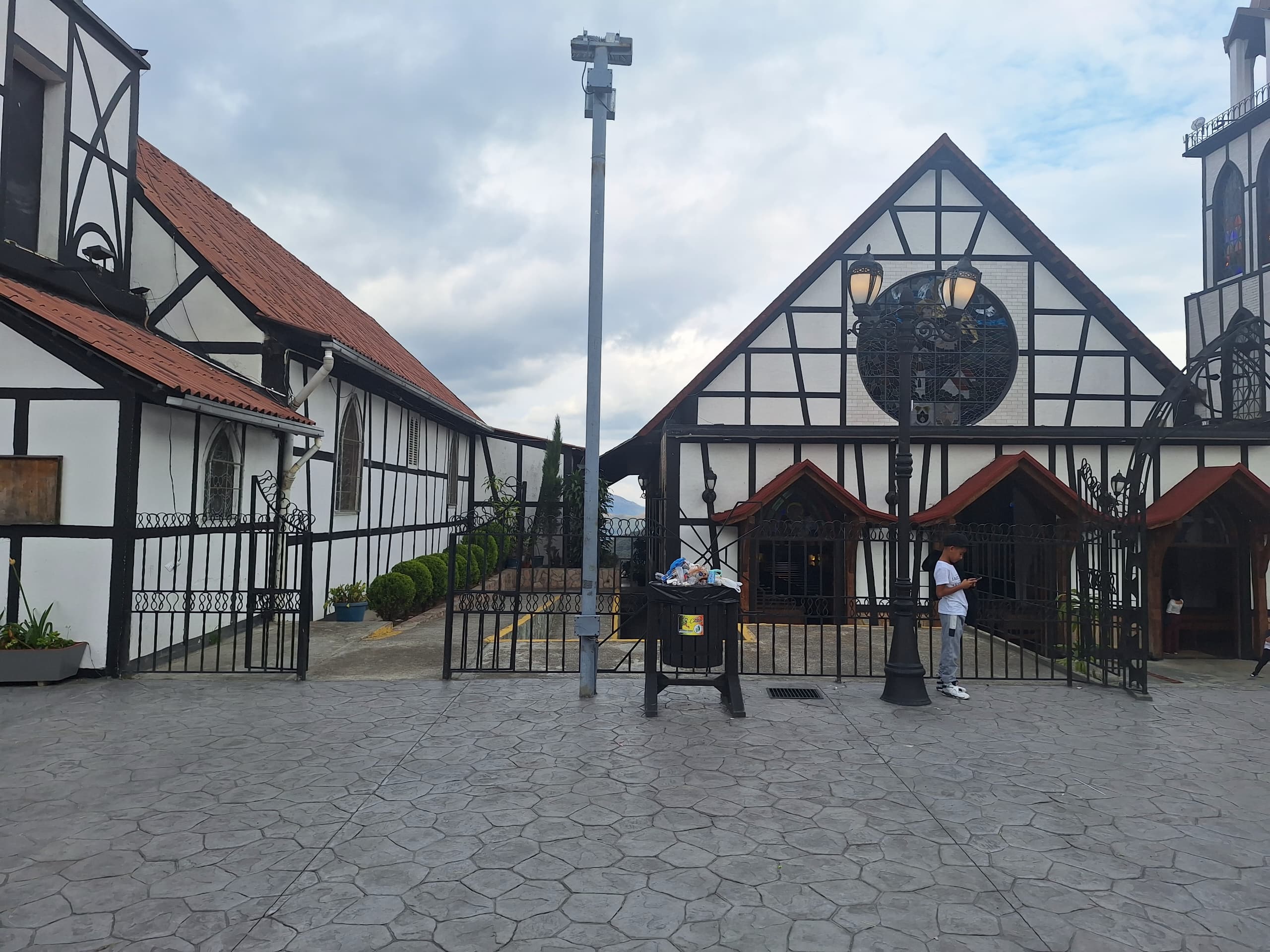
This church, for me as an urban planner, has several important elements for Venezuela. First, it is one of the most important landmarks of the historic center of Tovar Colony, and second, it is a cultural heritage of the country. It means that it is a sacred and important space in our culture. Also, it is part of the identity of Venezuela.
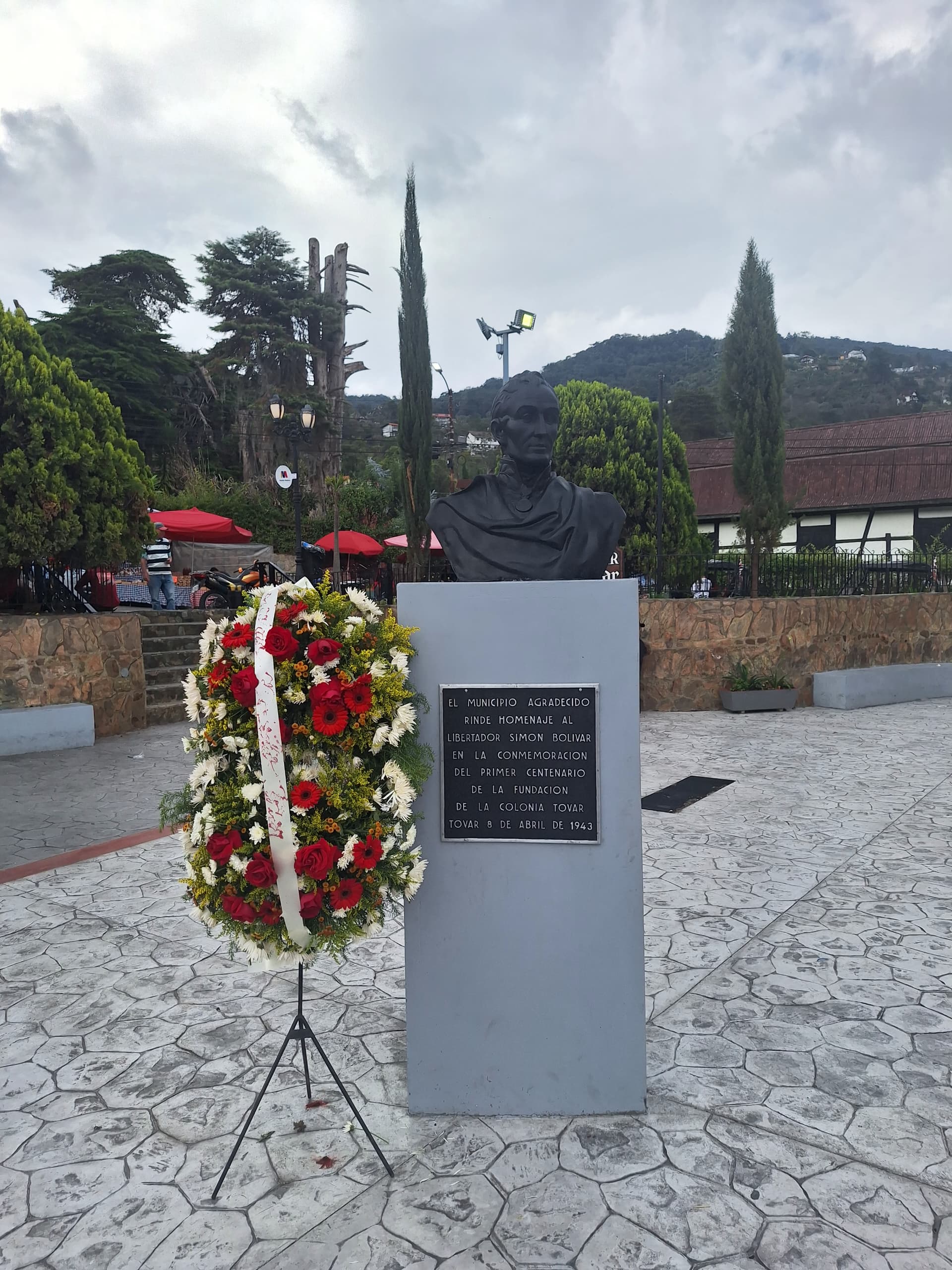 | 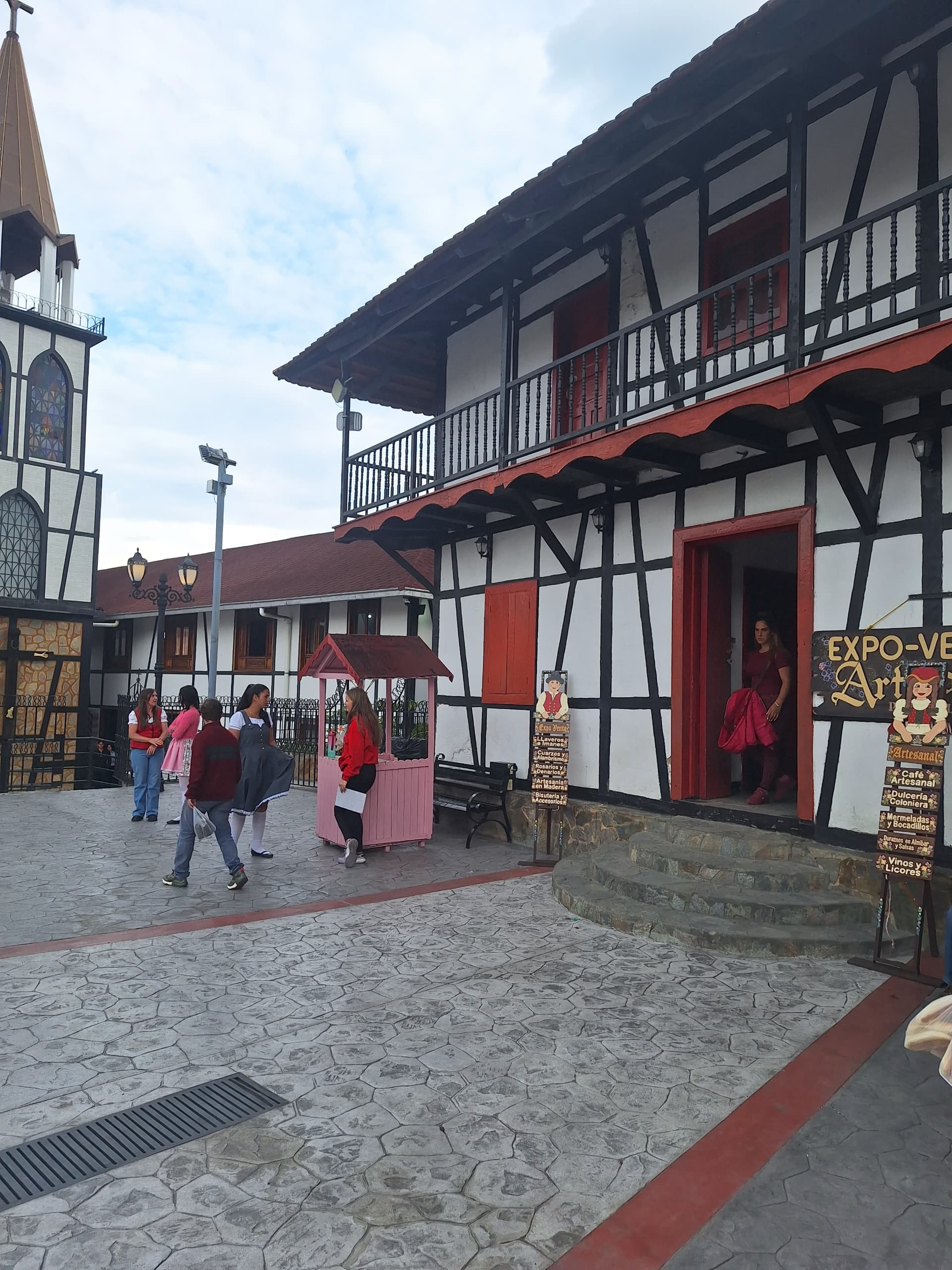 | 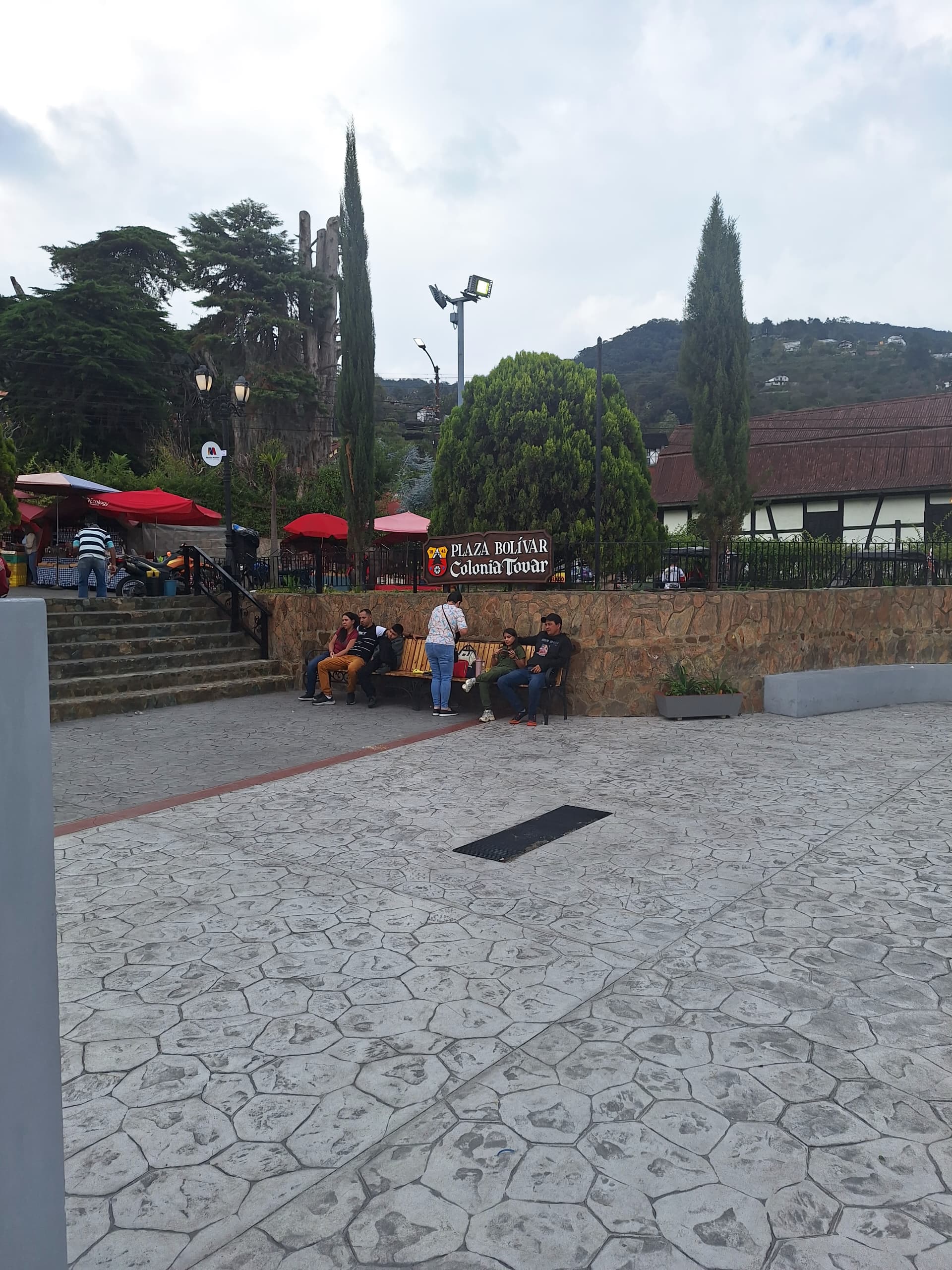 |
In front of the church is the Bolivar Square (in Venezuela, all cities and towns have a small square dedicated to the liberator). Although Simon Bolivar was not explicitly the founder of the republican form of Venezuela, he was a key player, very important and later achieved the independence of the country. For this reason, Venezuelans have a preponderant respect for the architect of independence.

Upon entering the church, the first thing I noticed were two altars. One was made to the virgin, and the other to José Gregorio Hernández. Both were surrounded by candles and a mailbox (I think it was an offering box). I am not Catholic, but I respect the religion and history of the country.
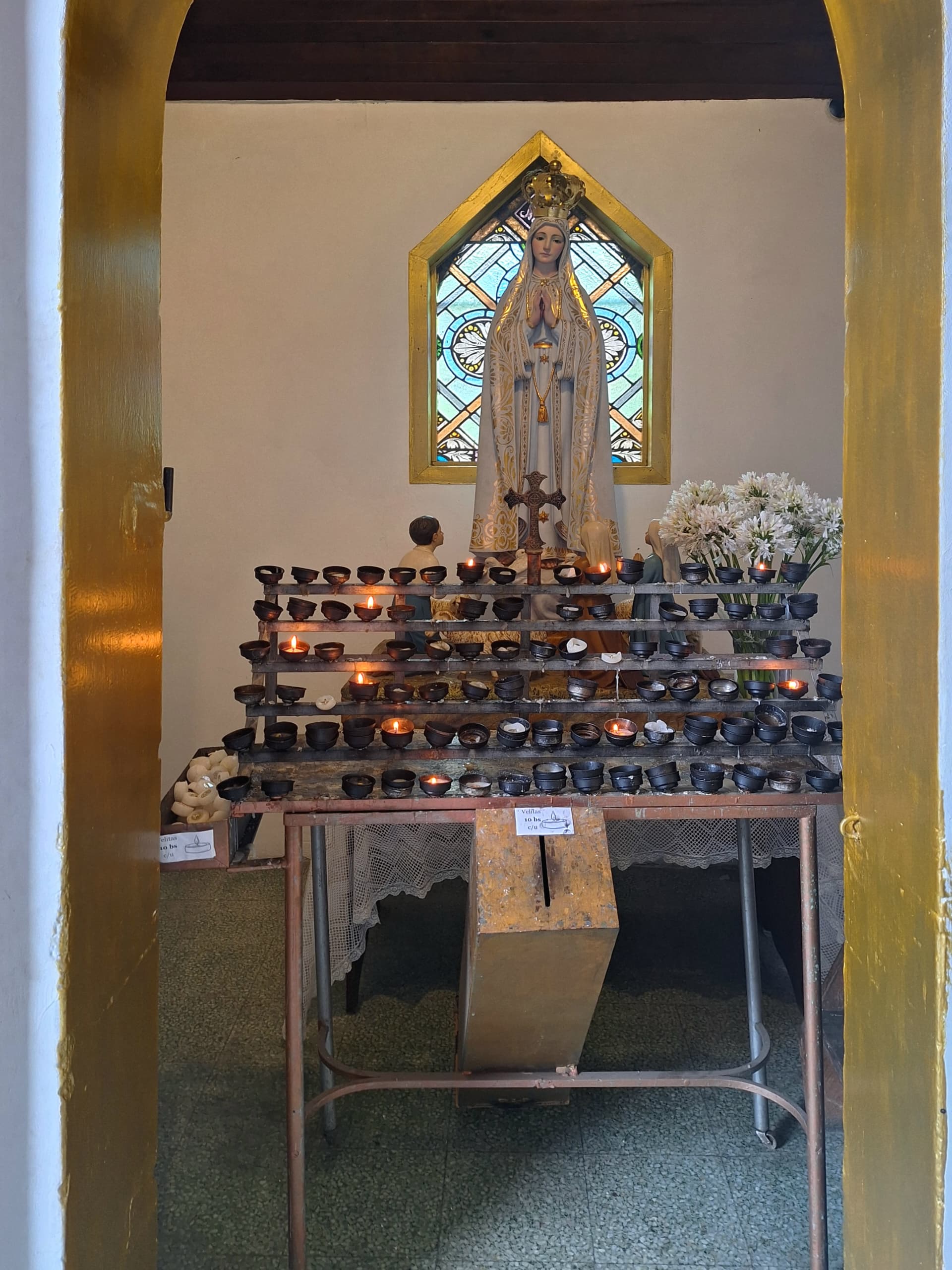 | 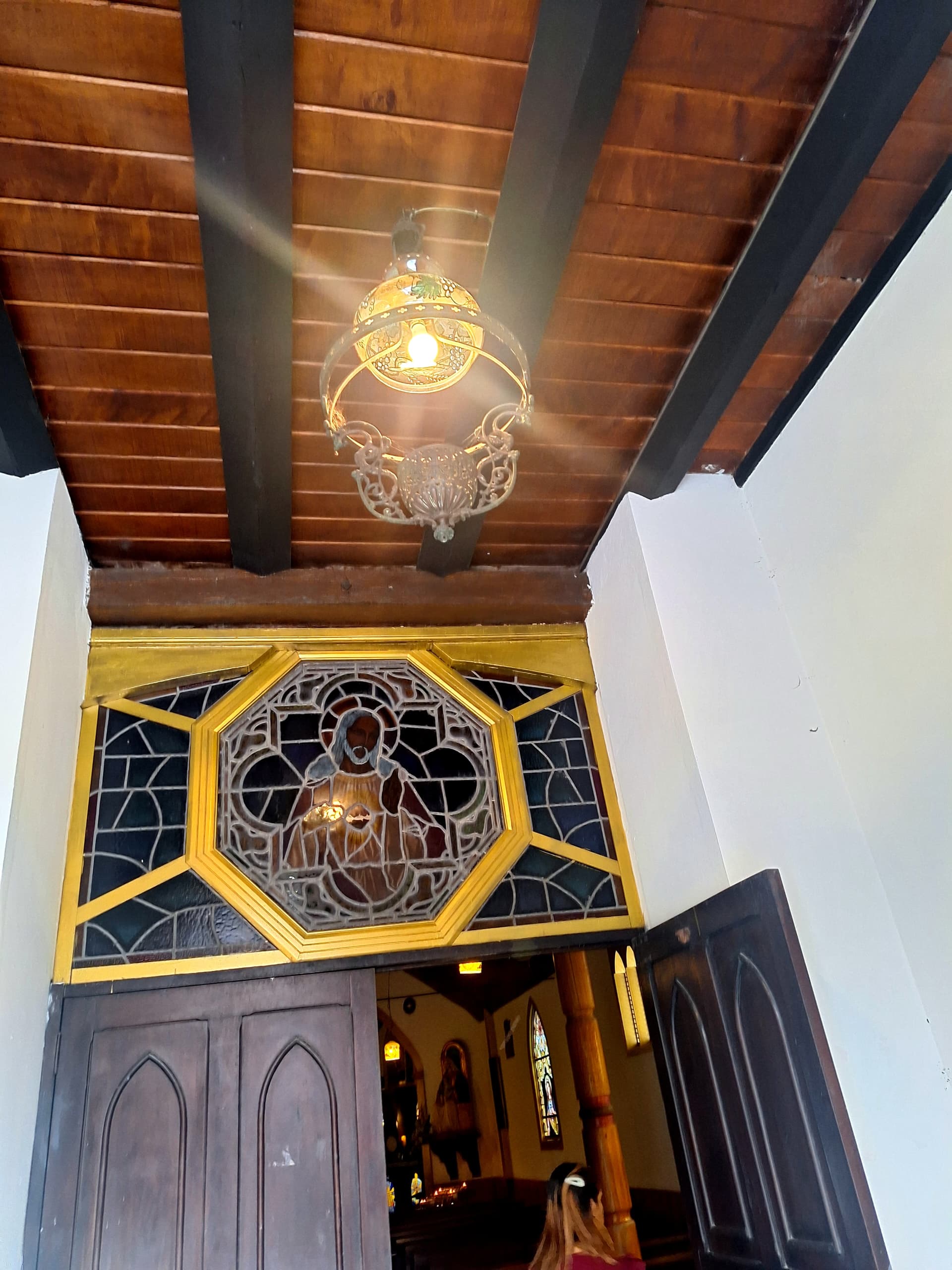 | 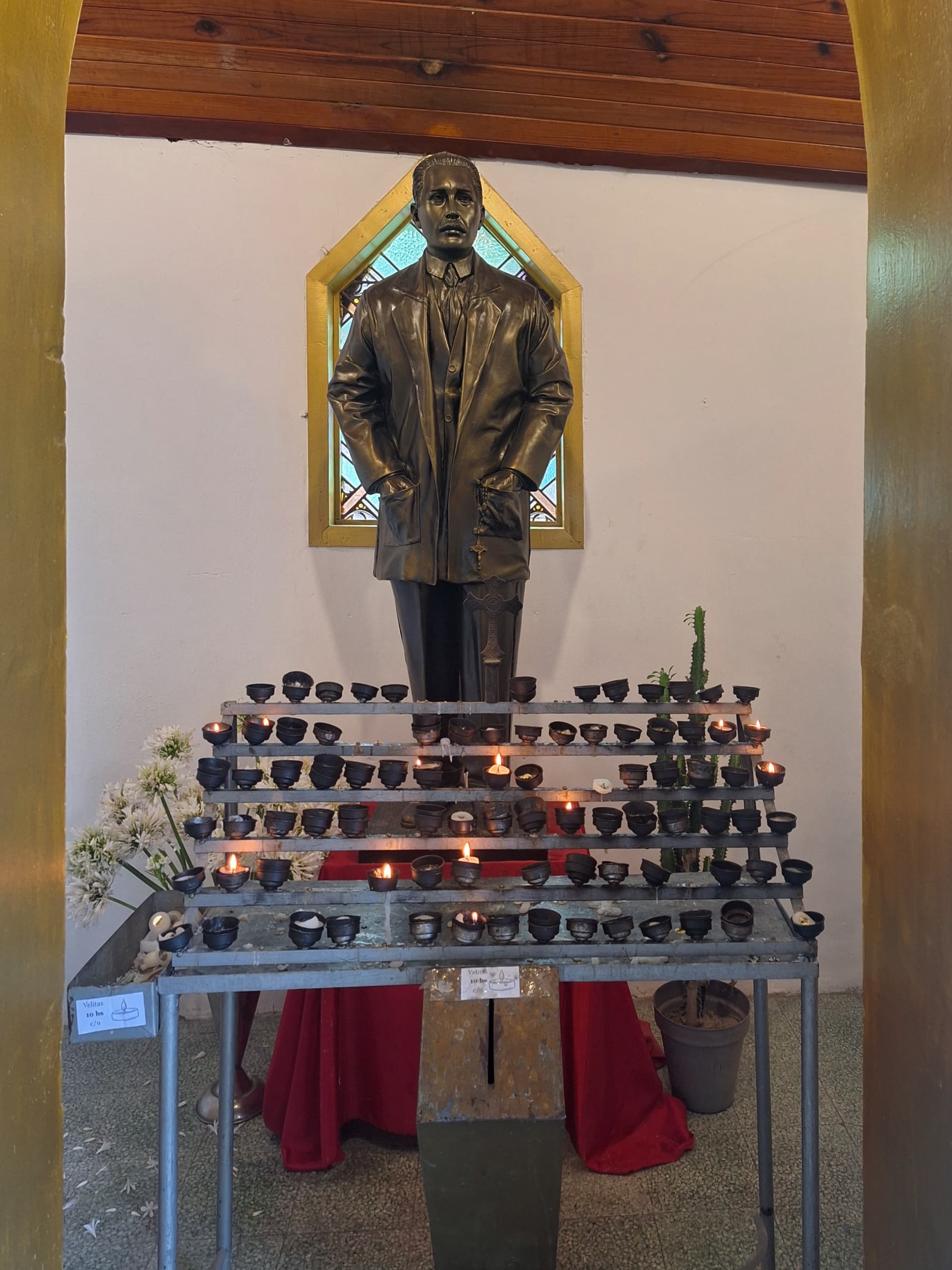 |
After this, there was a door with a notice that read: “No one is so holy that he need not enter. No one is so sinful that he cannot enter. The church is not going to fall down because you enter it. God always waits for you with open arms!” This notice was very peculiar to me. Also, behind one of the two doors at the entrance, there was a basket of papers with Bible verses. Even more peculiar!
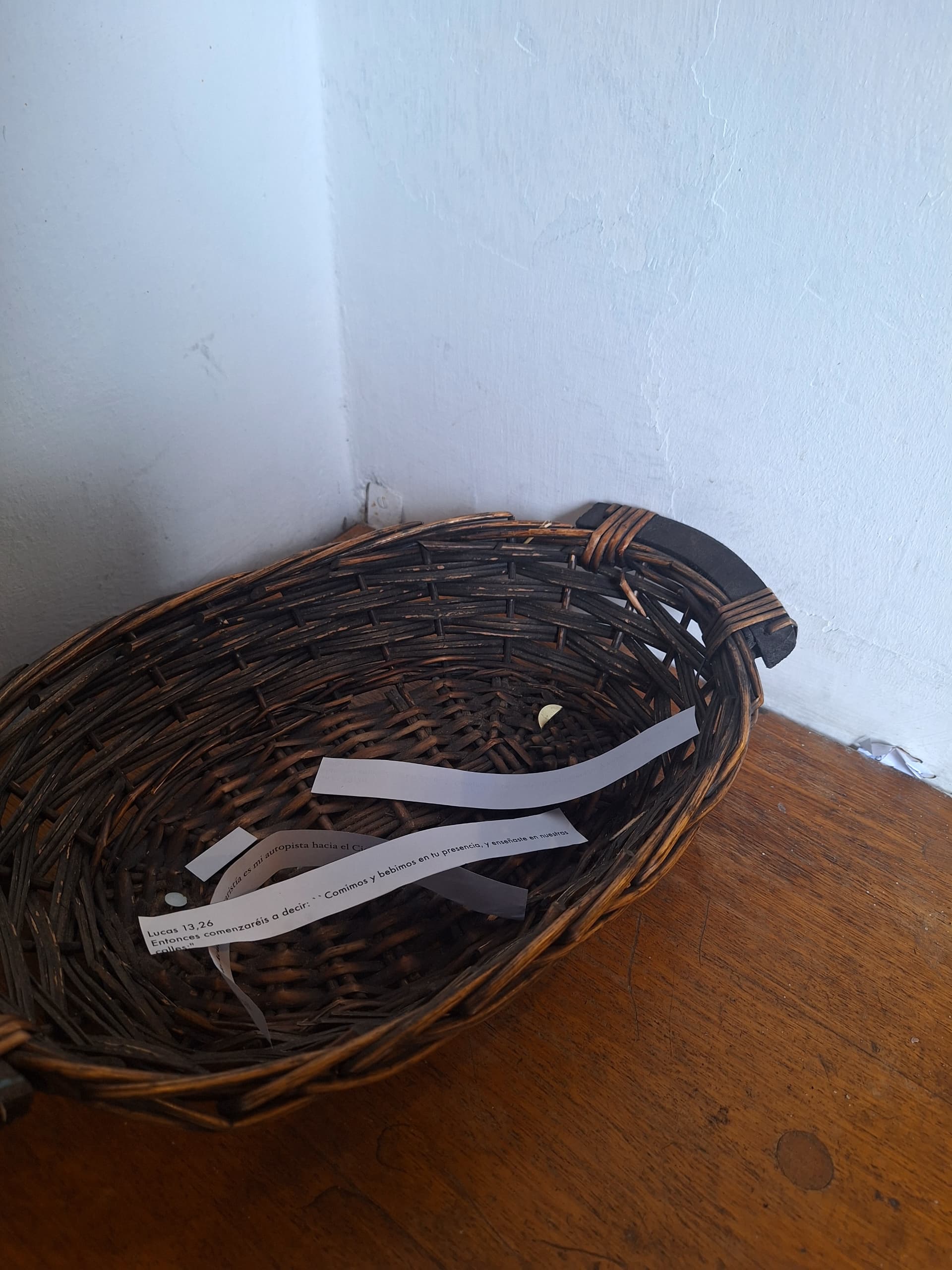 | 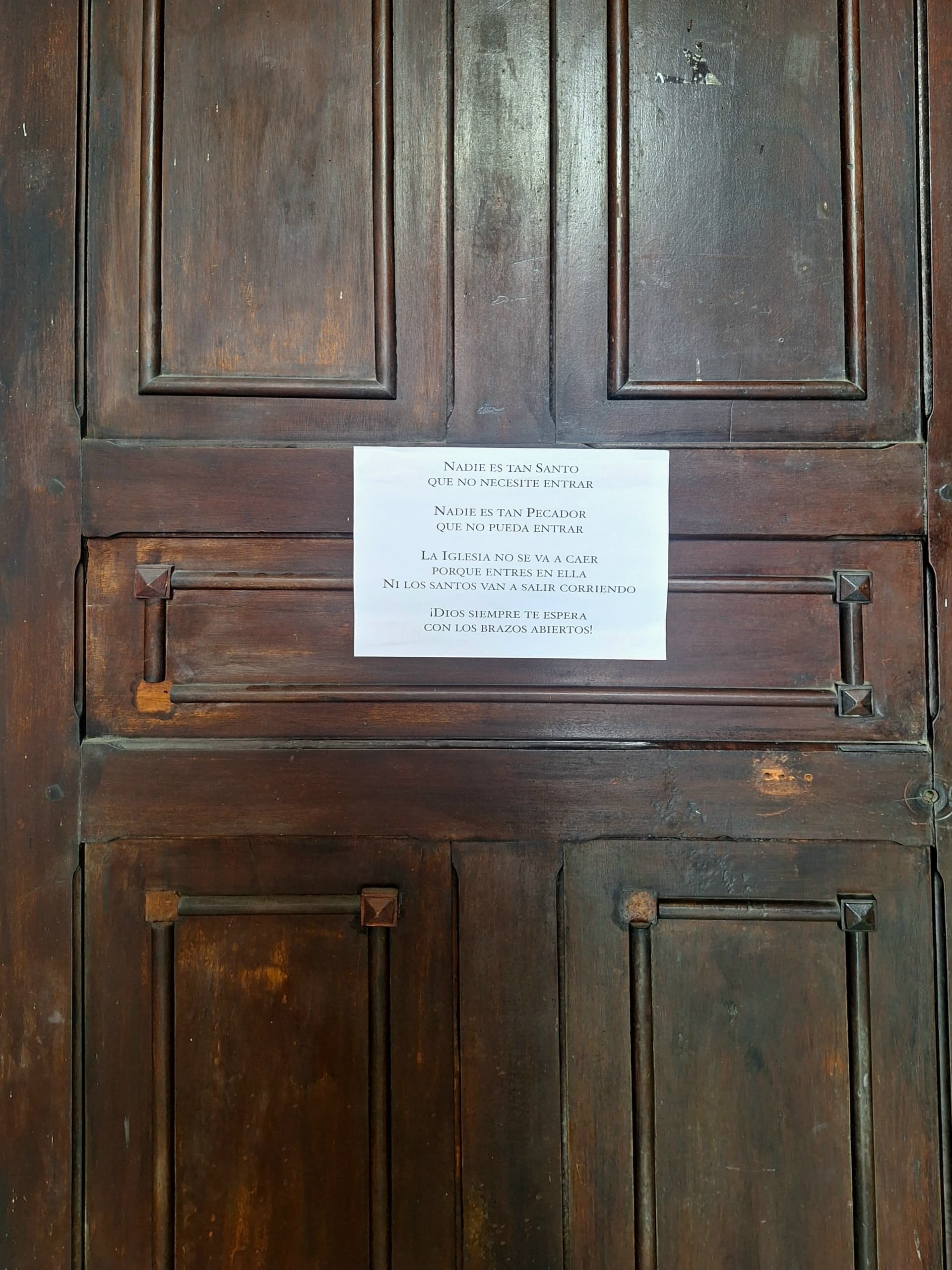 | 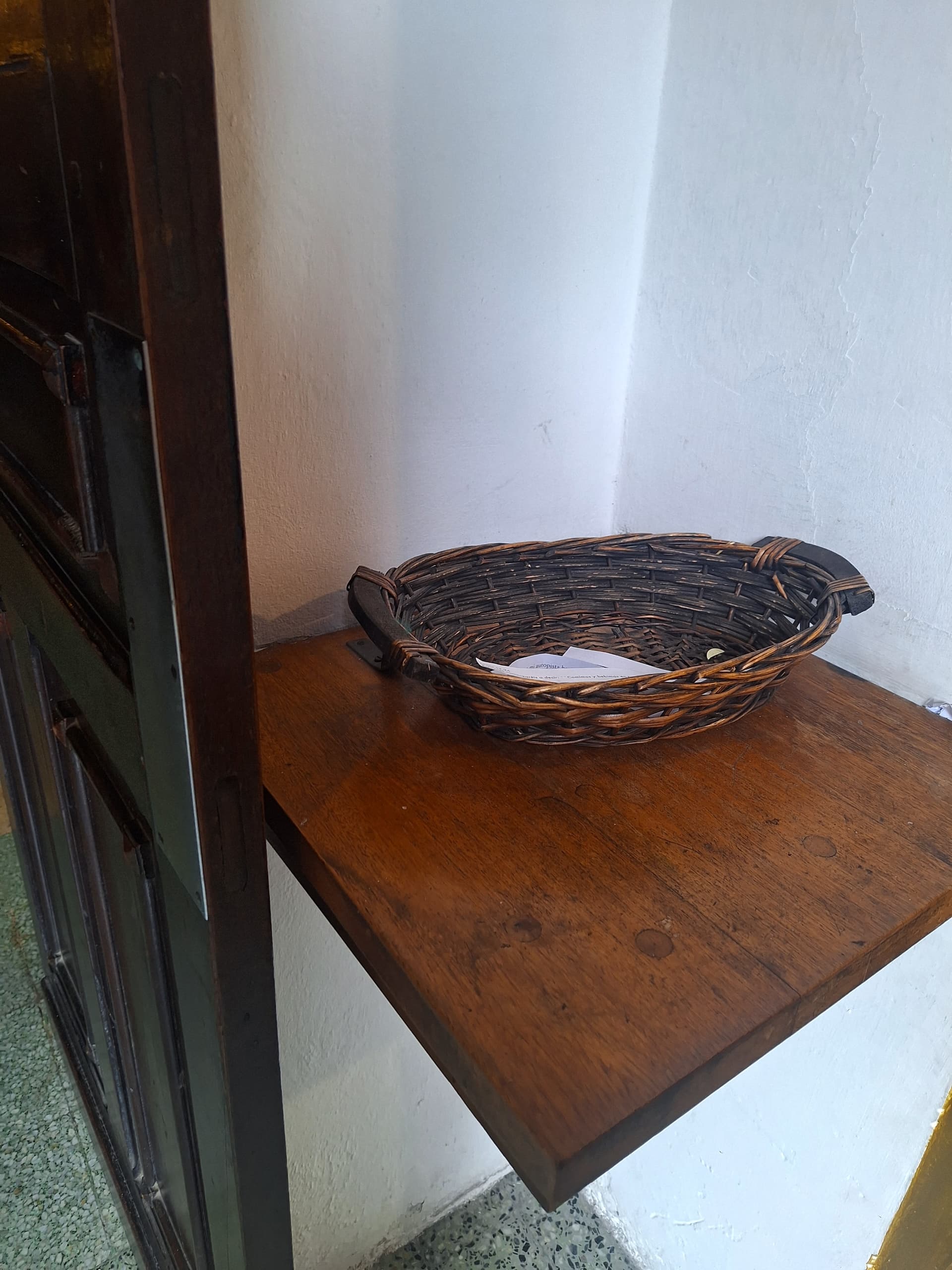 |
Upon entering the church chapel, I found several elements that stand out within the interior design of the church. A container made of marble filled with water and old lamp stands filled with candles.
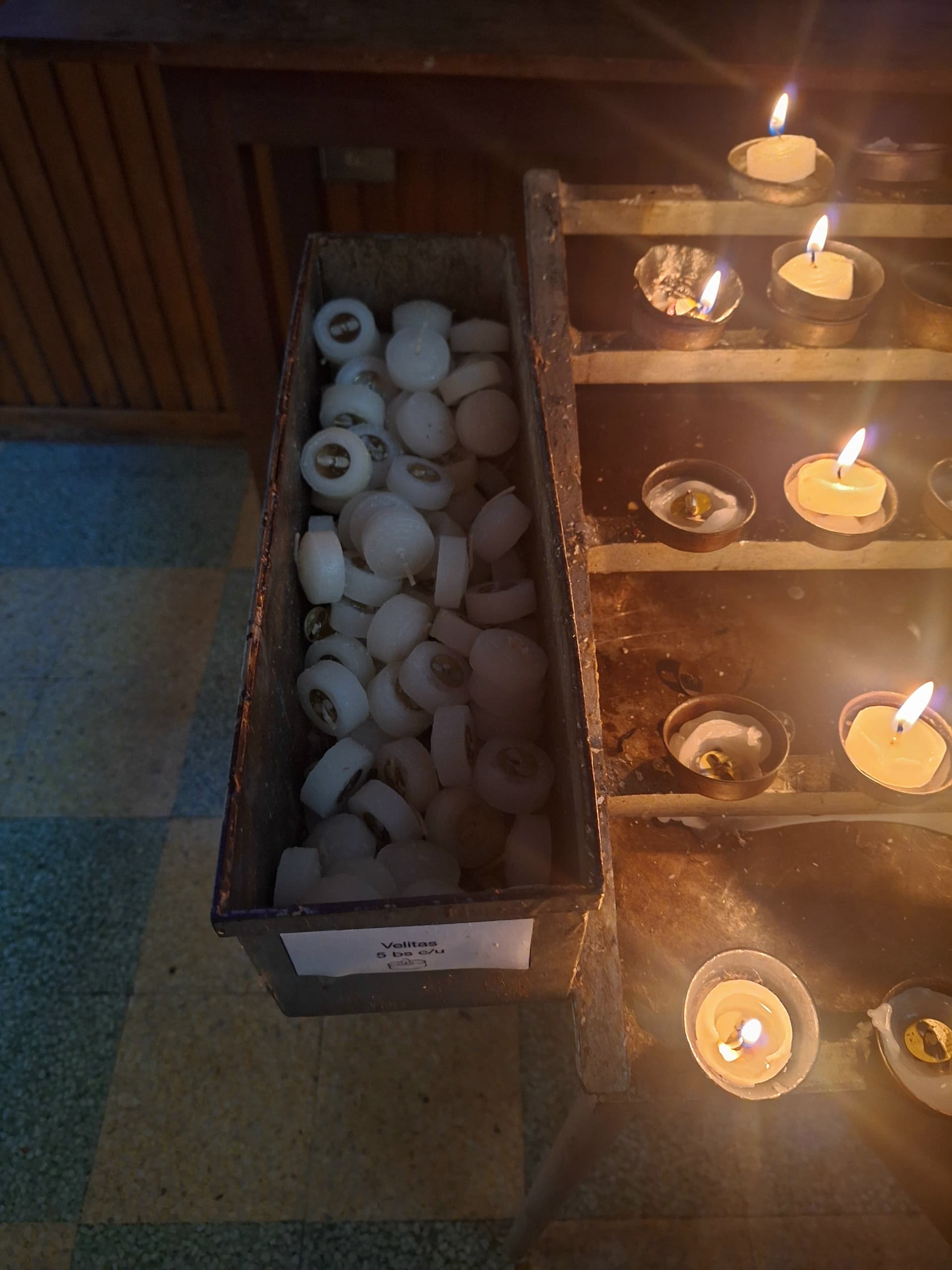 | 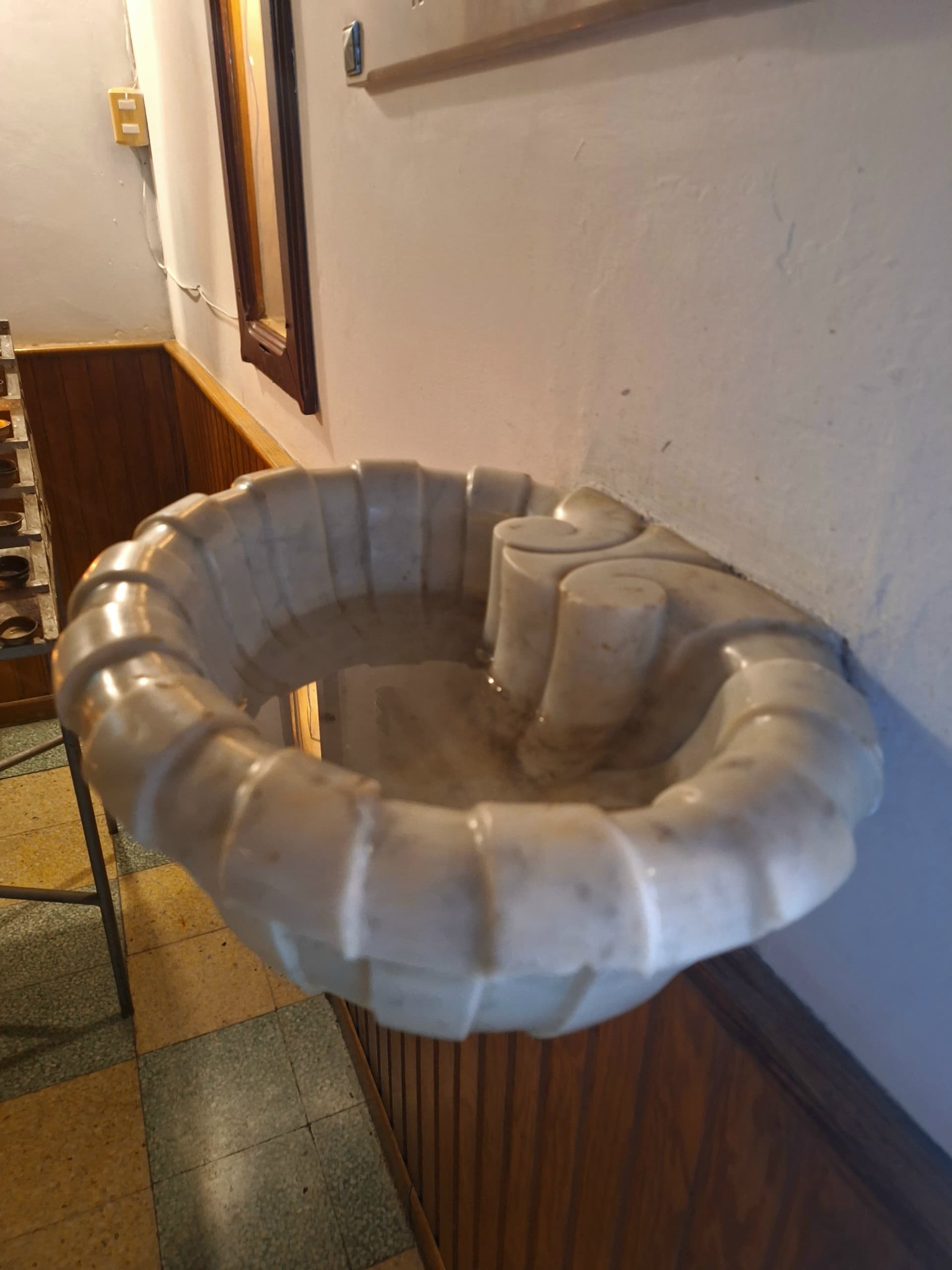 | 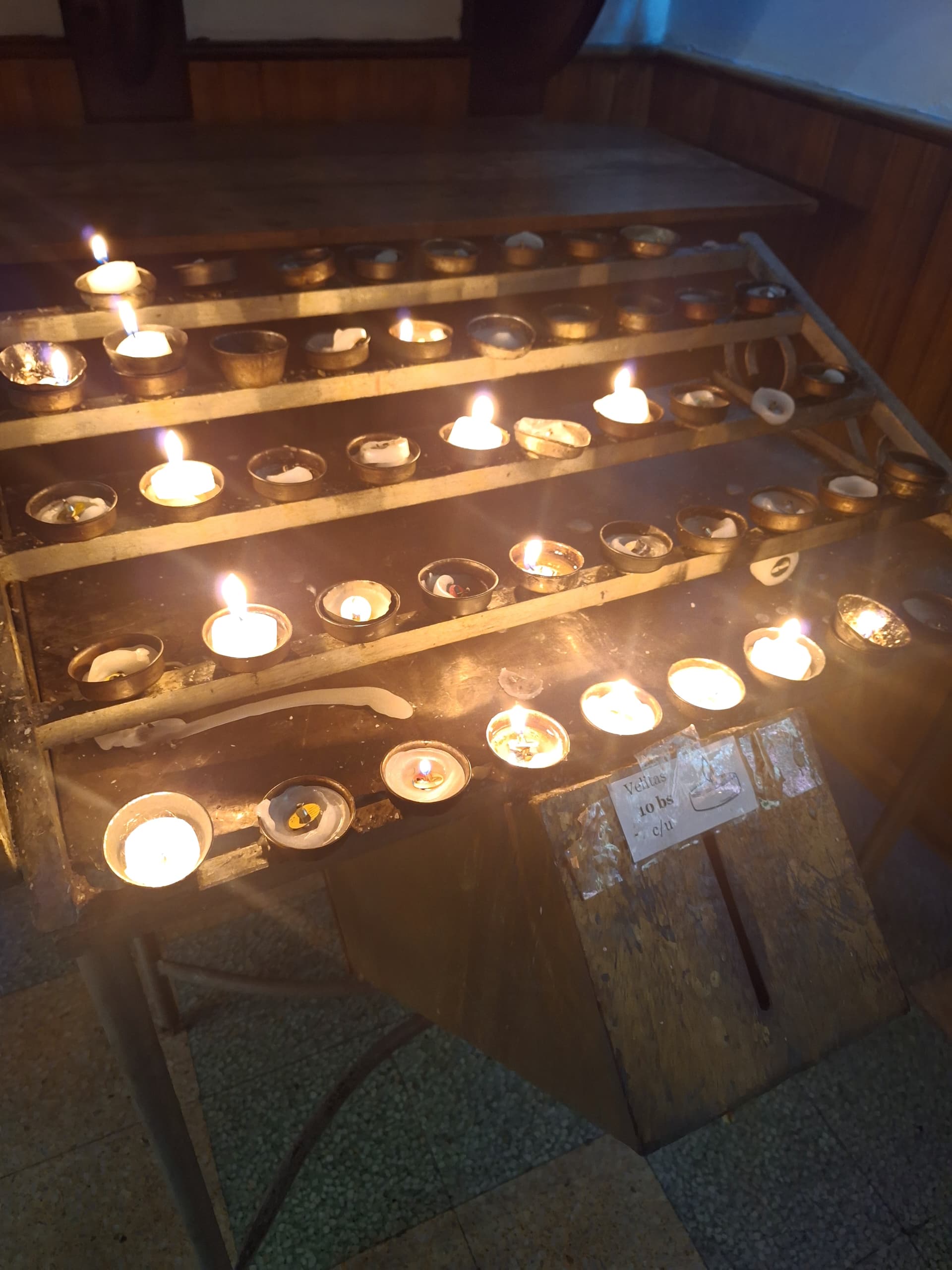 |
Something I really liked was a beautiful Catholic stained-glass window. The colors in that stained-glass were beautiful. Depending on the angle you looked at it, the light reflected inside the church in different ways.

Near the entrance, there was also a figure of a crucified Christ. Near him, there was another stained-glass window that made that space look incredible.
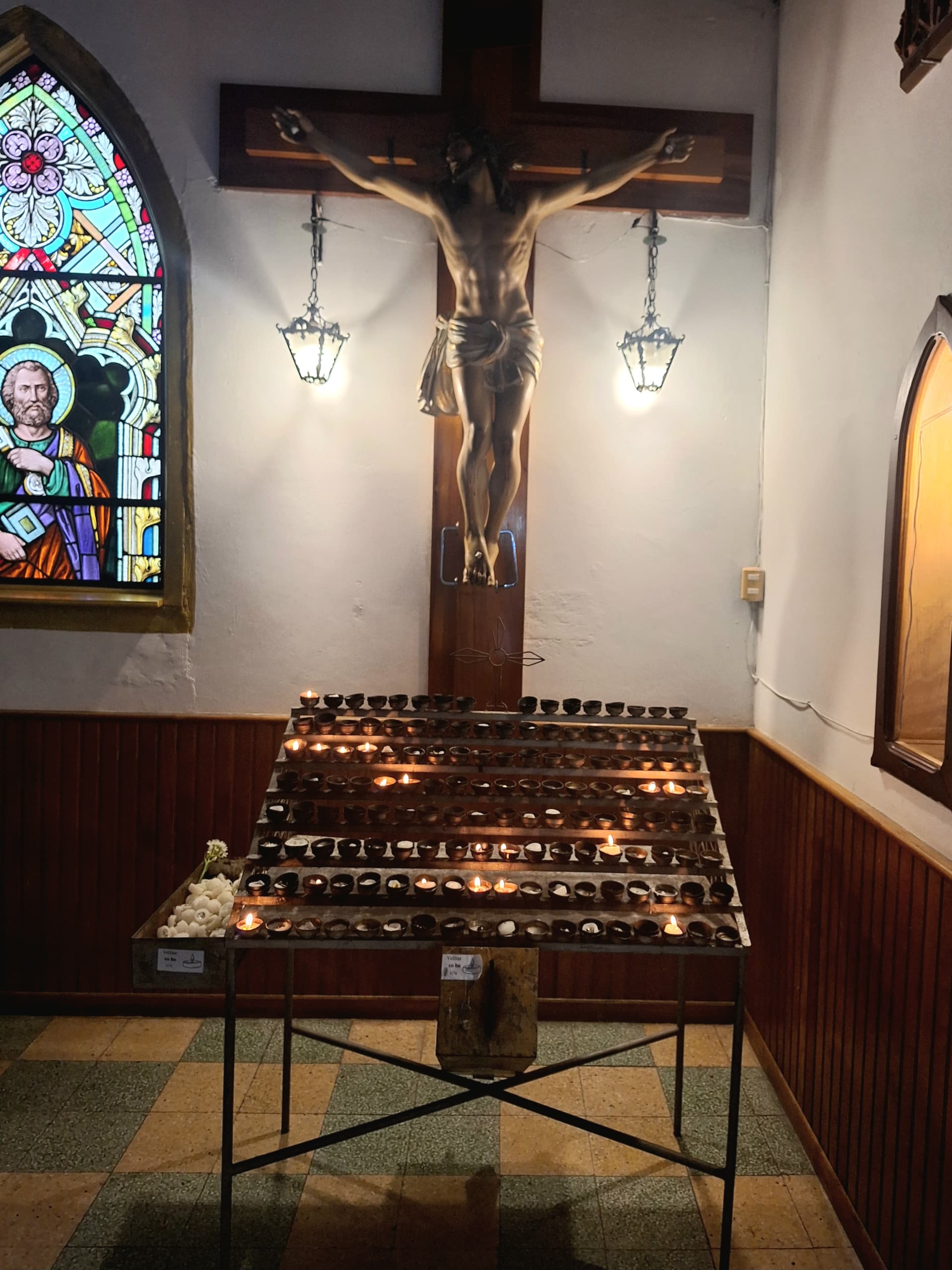
In one of the walls, there was a perforation, and there was a sculpture. I don't know who it was, but it was illuminated. As I said, I am not Catholic, but I always maintain respect.
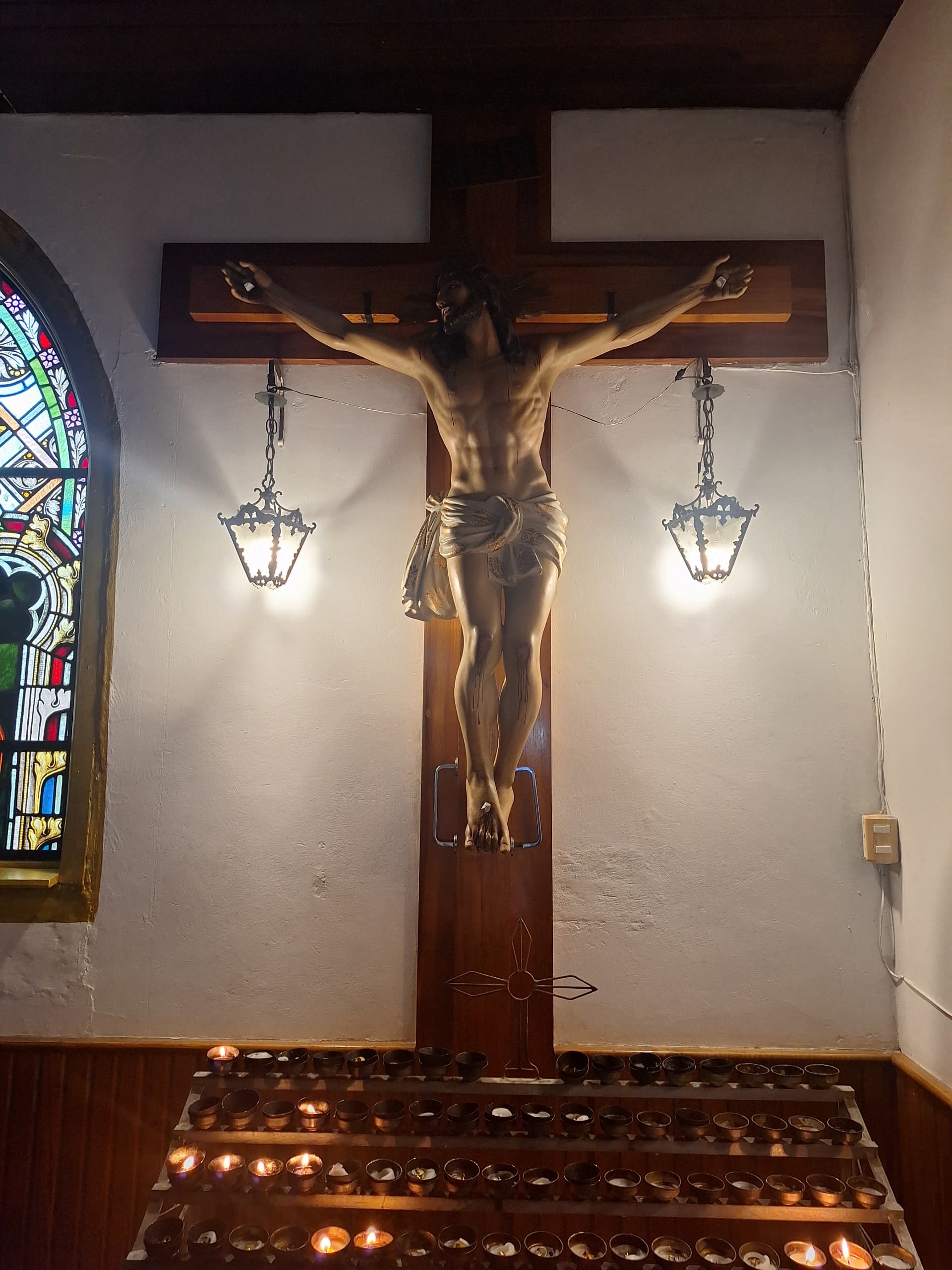 | 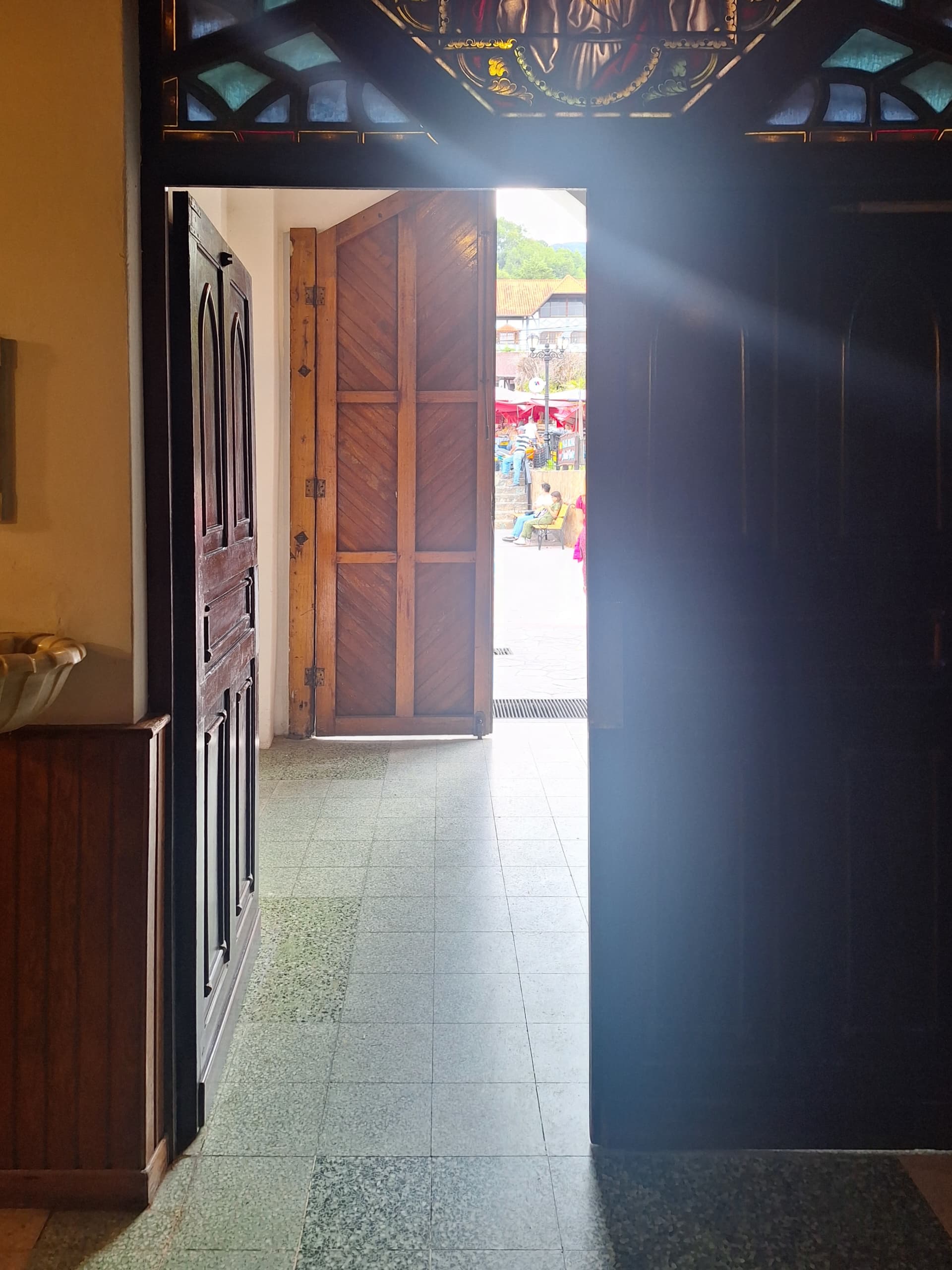 | 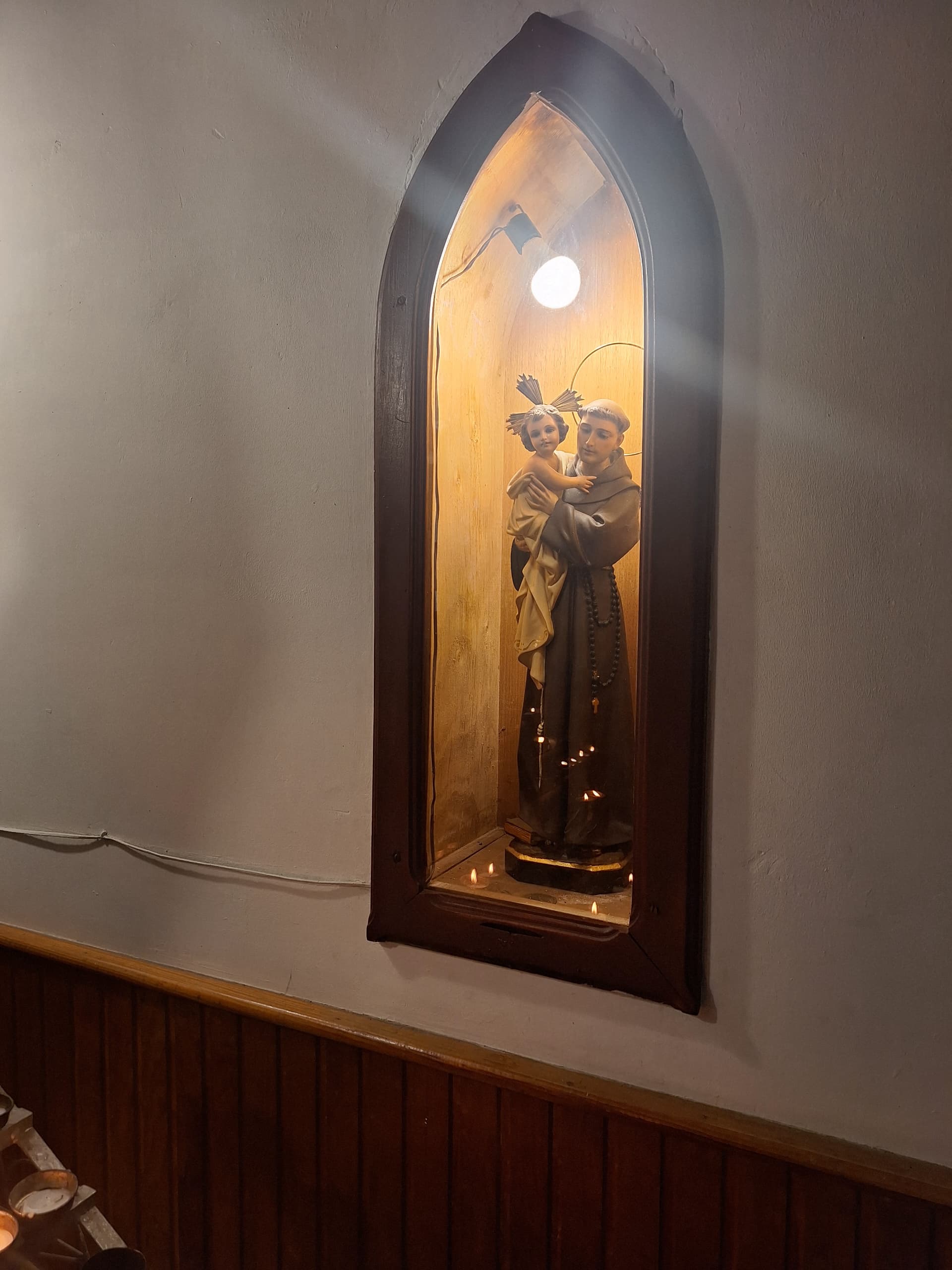 |
As I entered the church, I could see that it was all built with wood; however, I could see that at the top there was a wall of gray blocks. I asked the guide later when I was doing the tour, and he indicated that it was a remodeling project to build the towers. The first one was built in 1981 and the other, two years later in 1983, but I must point out that these were originally made of wood.
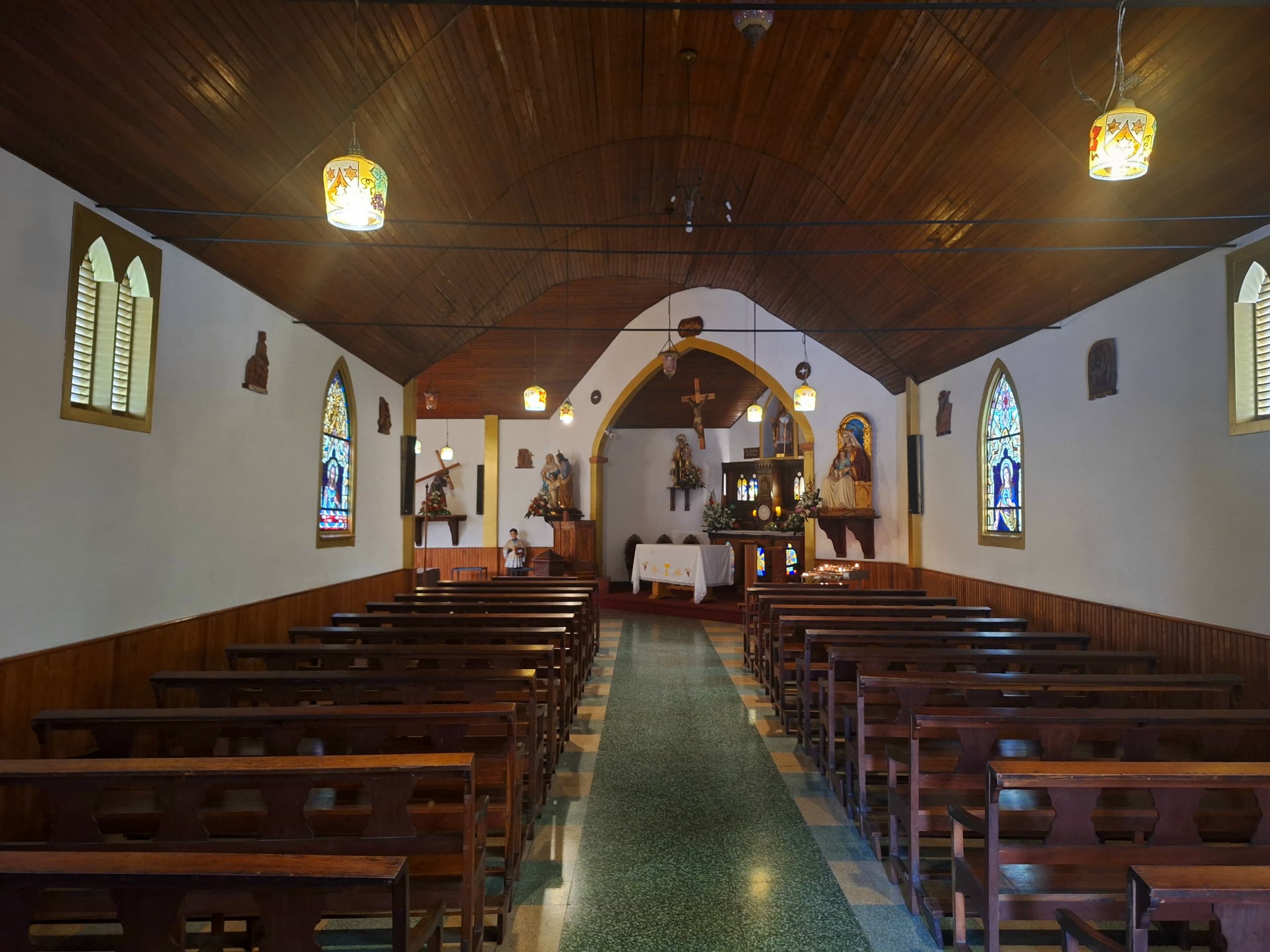
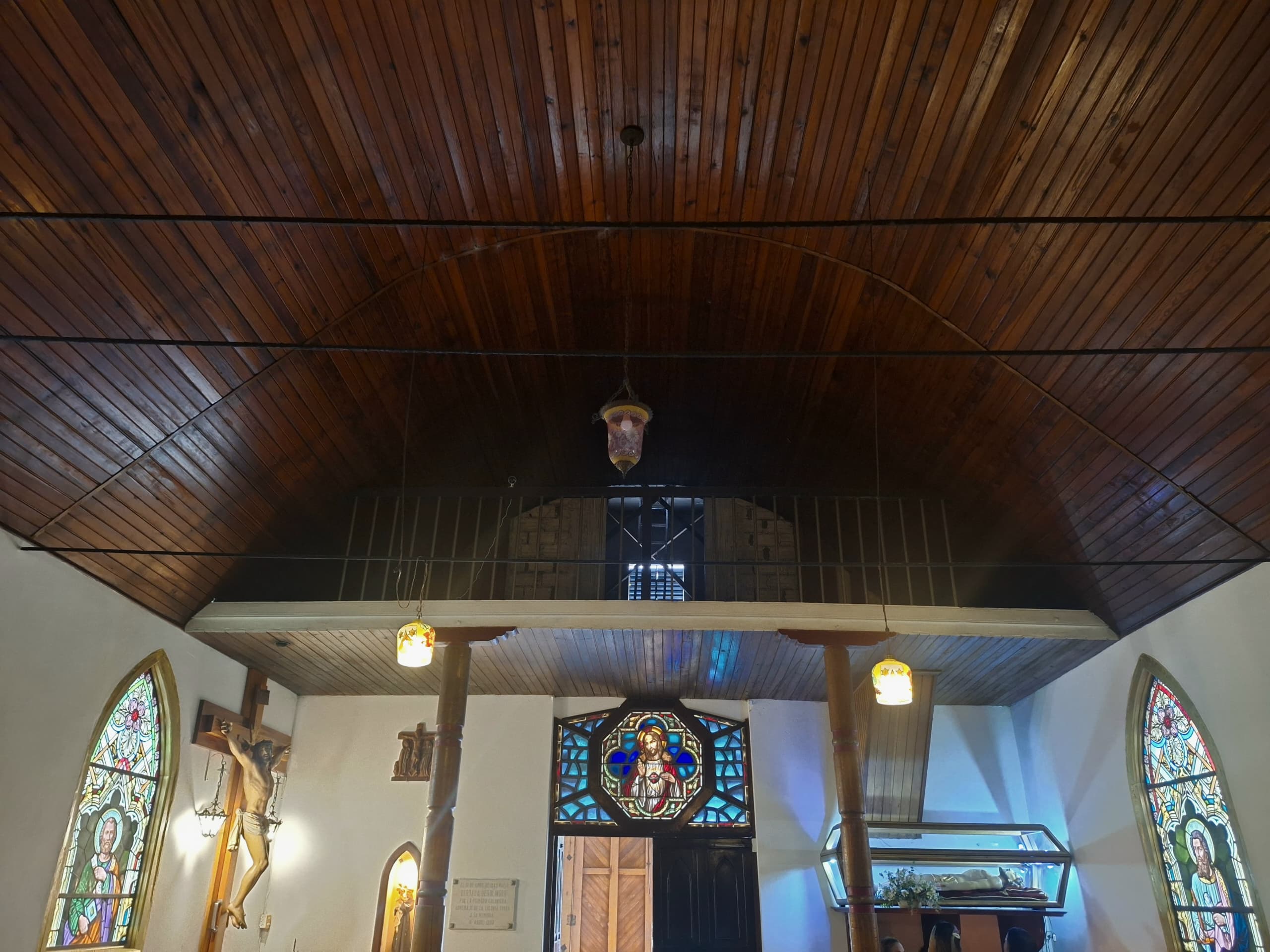
A couple of years ago, there was a national scandal because the church had termites and the structure needed to be renovated. There was no one inside that I could ask about the renovation.
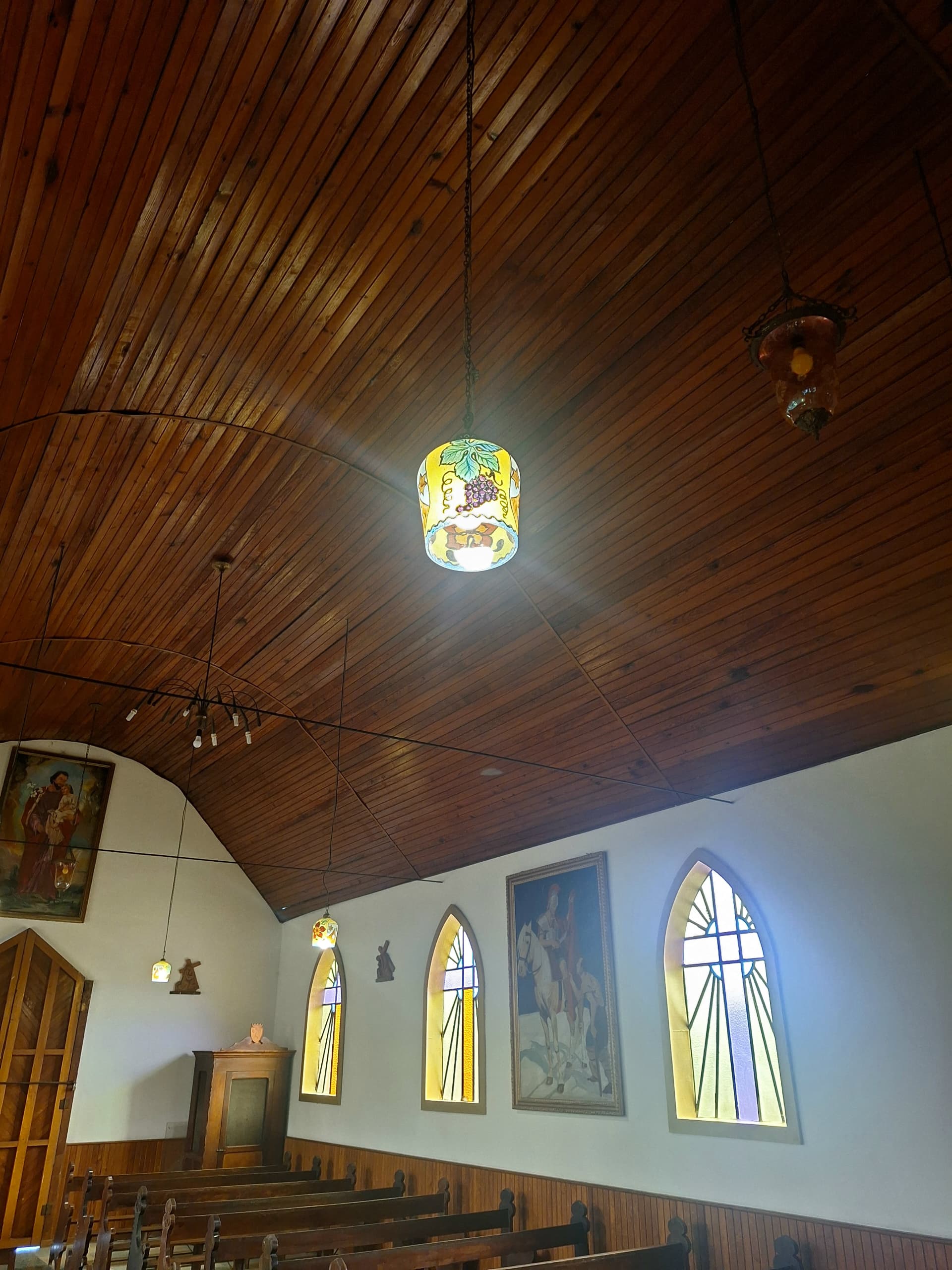
The interior of the church was very well-preserved. There was complete harmony between the pews, the chandeliers, the white walls, the stained-glass windows, and the color of the ceiling. The only thing I didn't like was the color of the ceramic floor tile (I don't know how old it was).
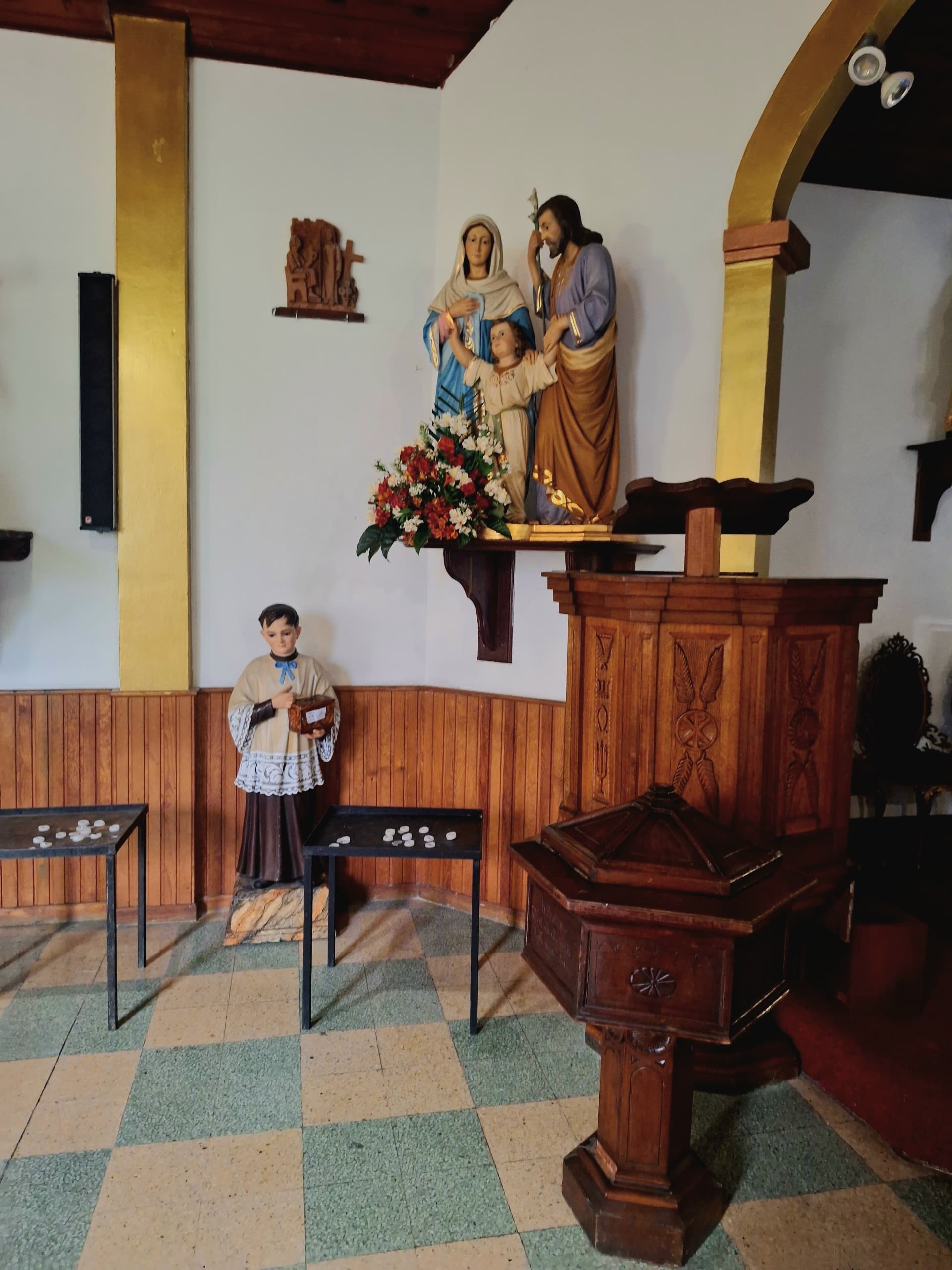 | 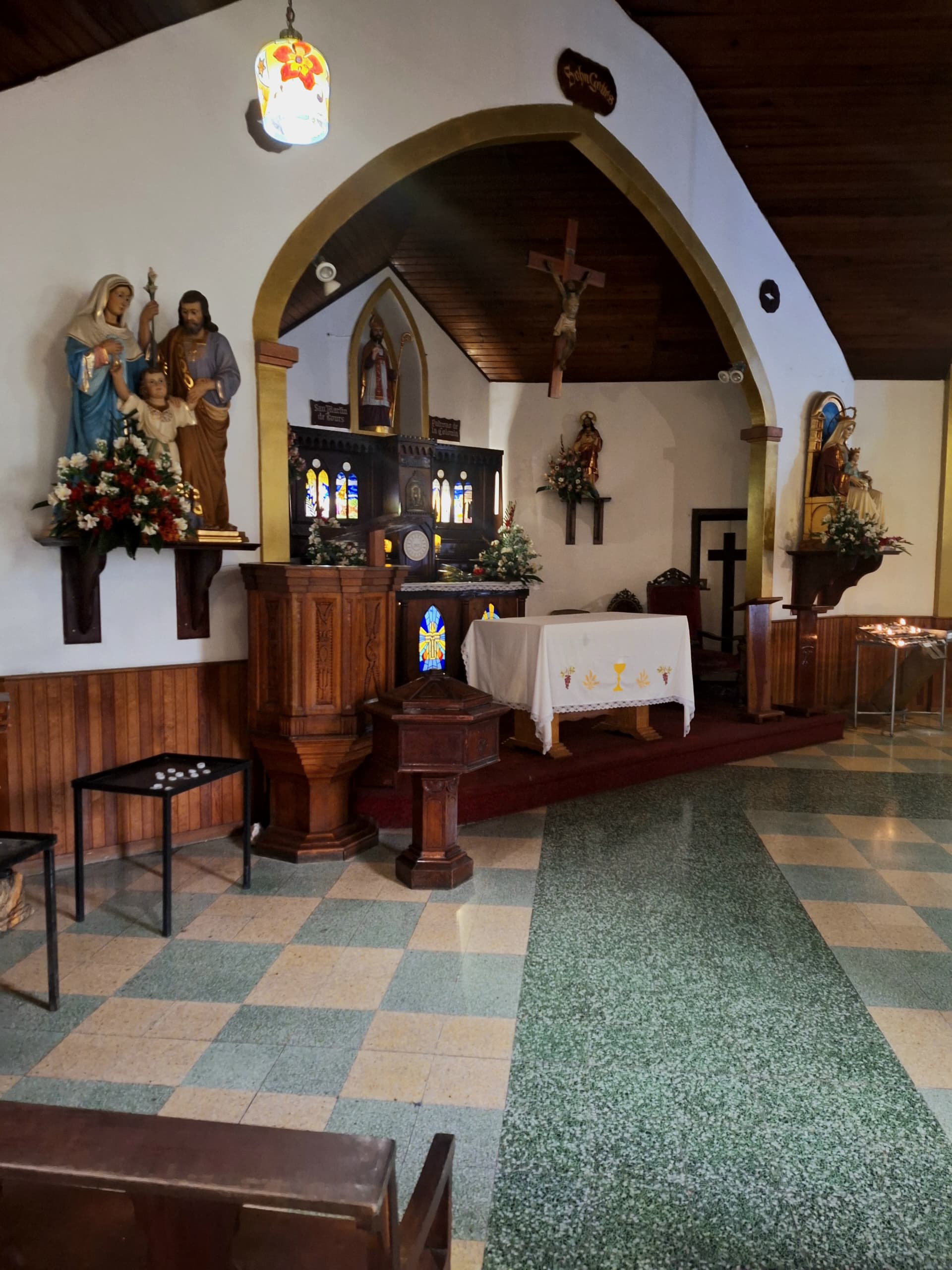 | 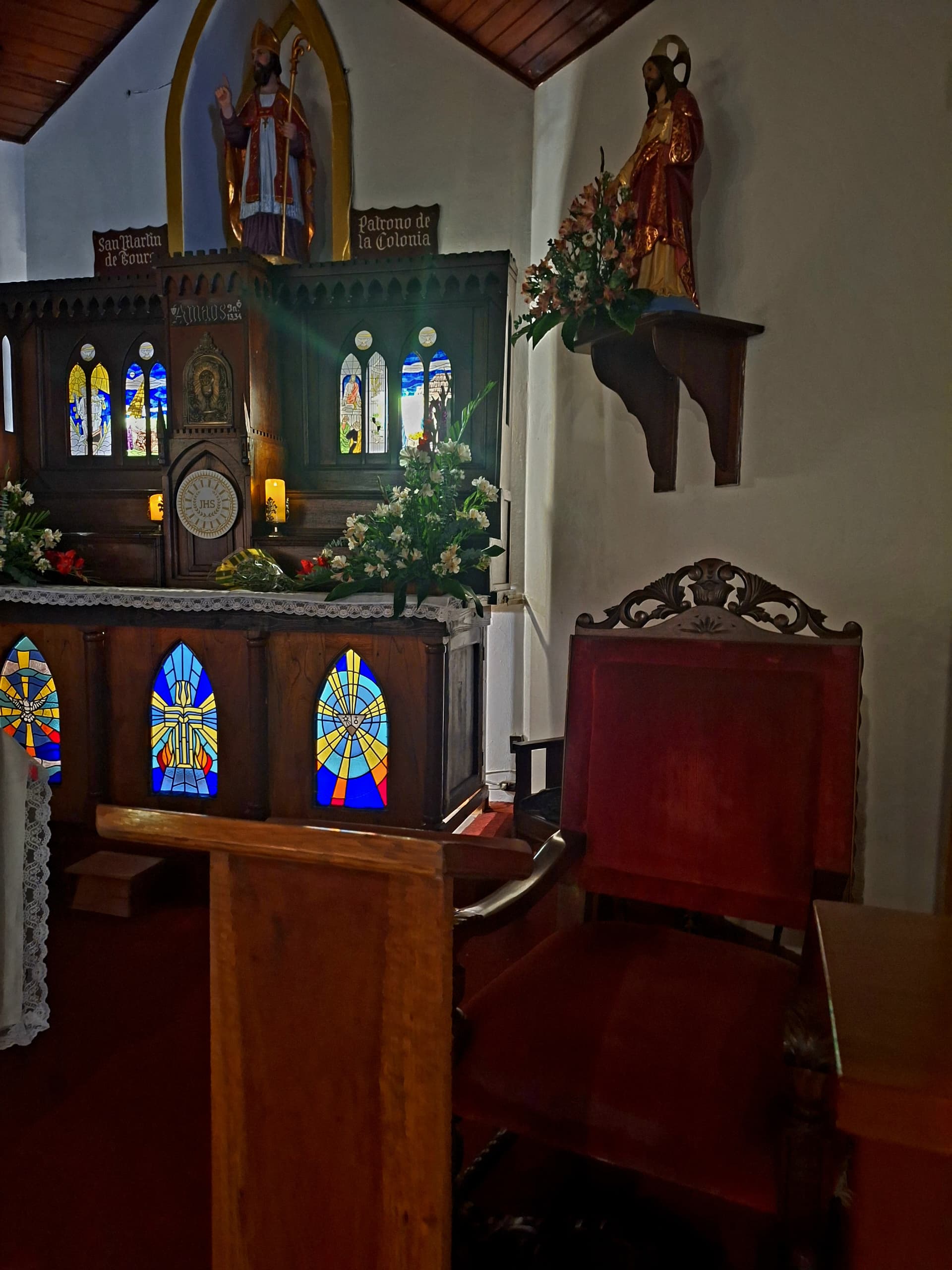 |
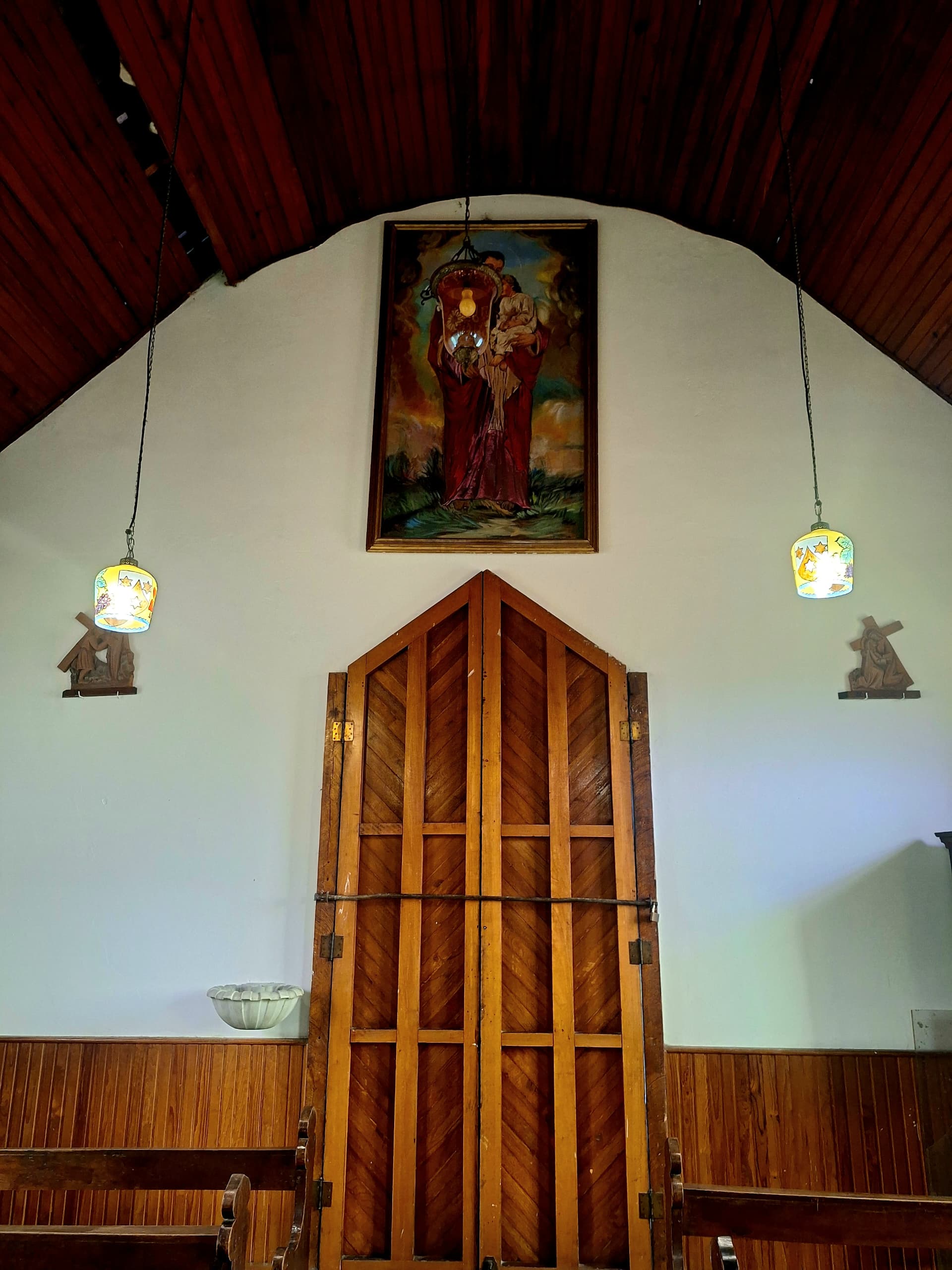 | 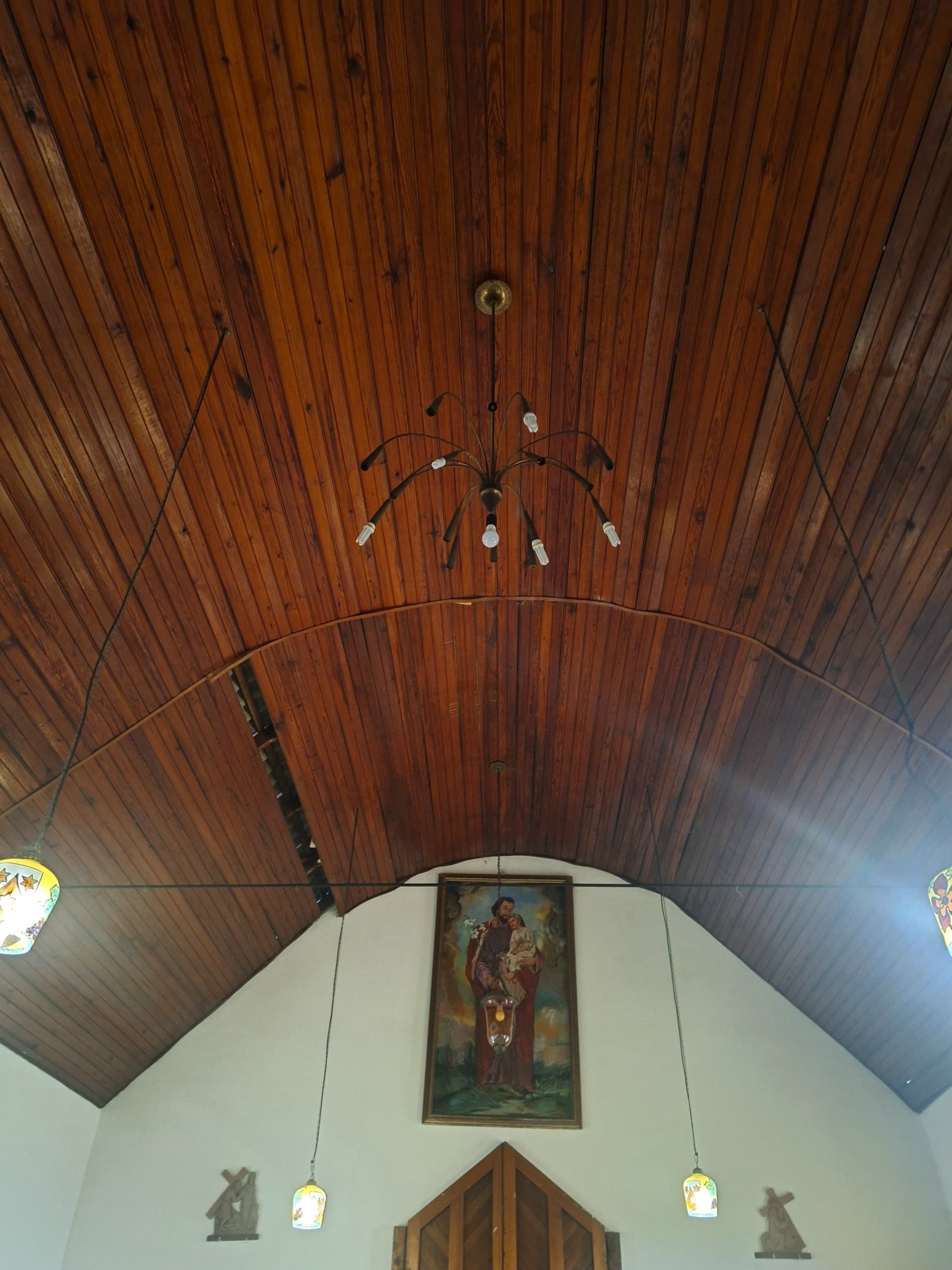 | 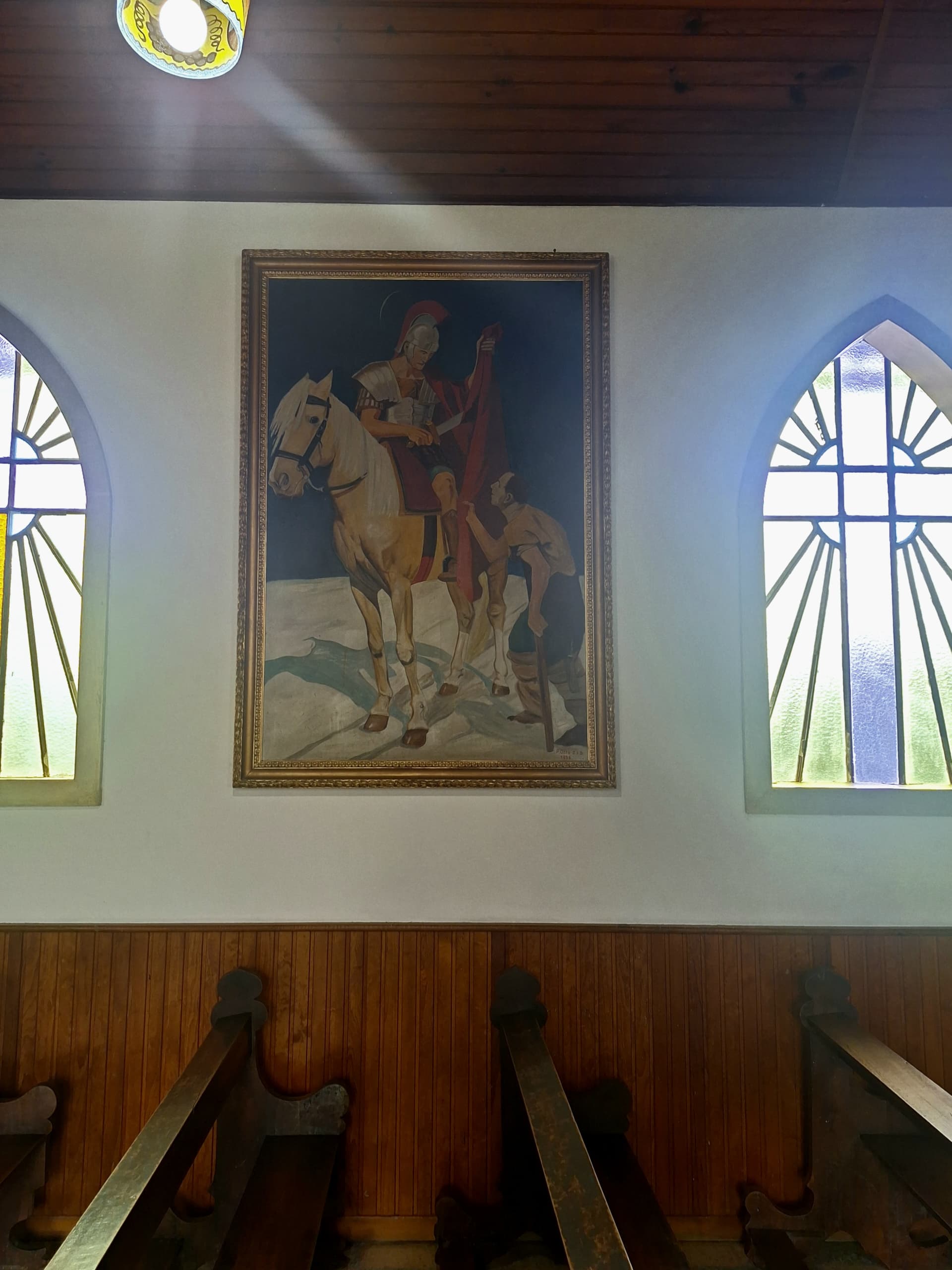 |
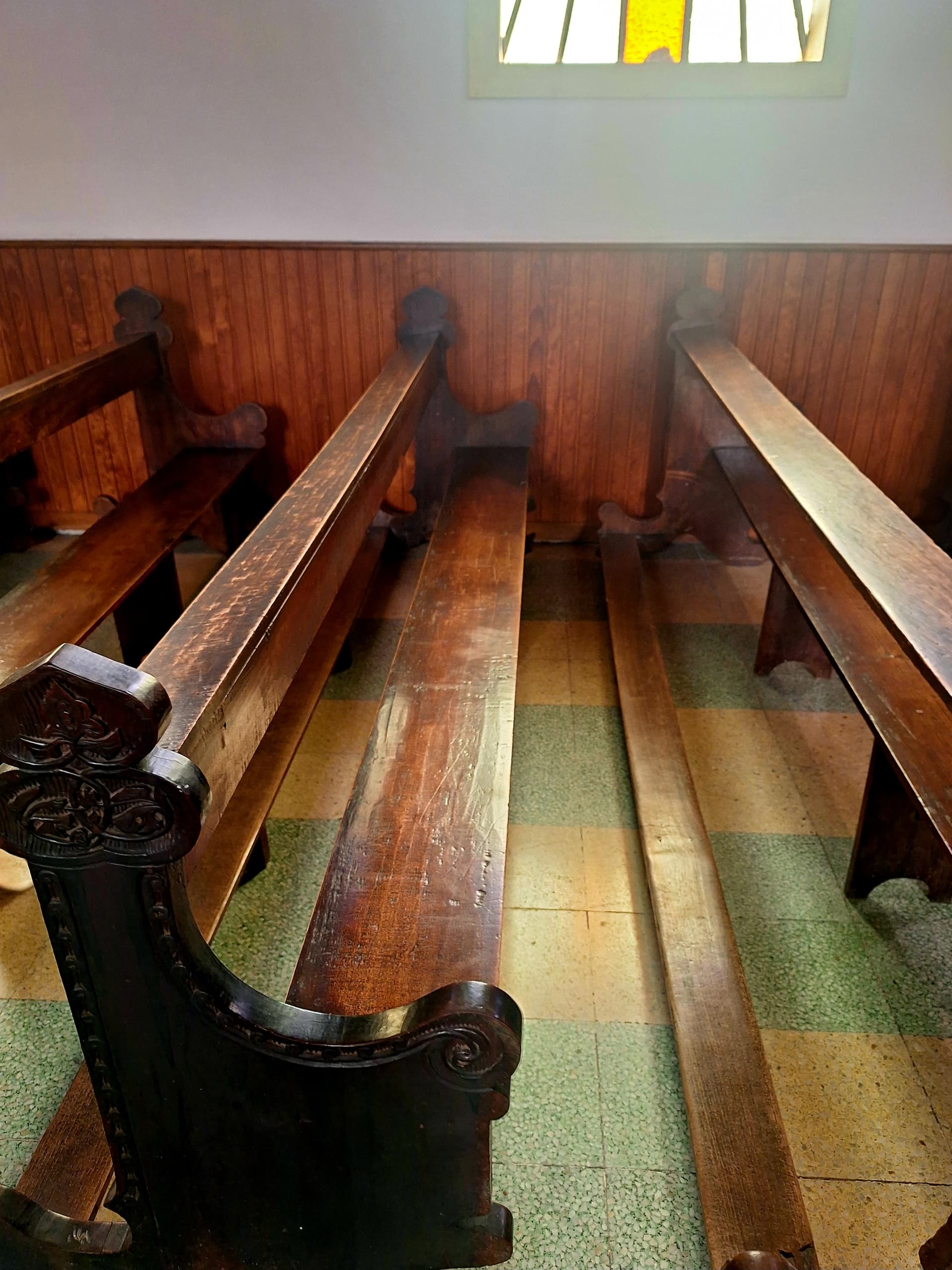 | 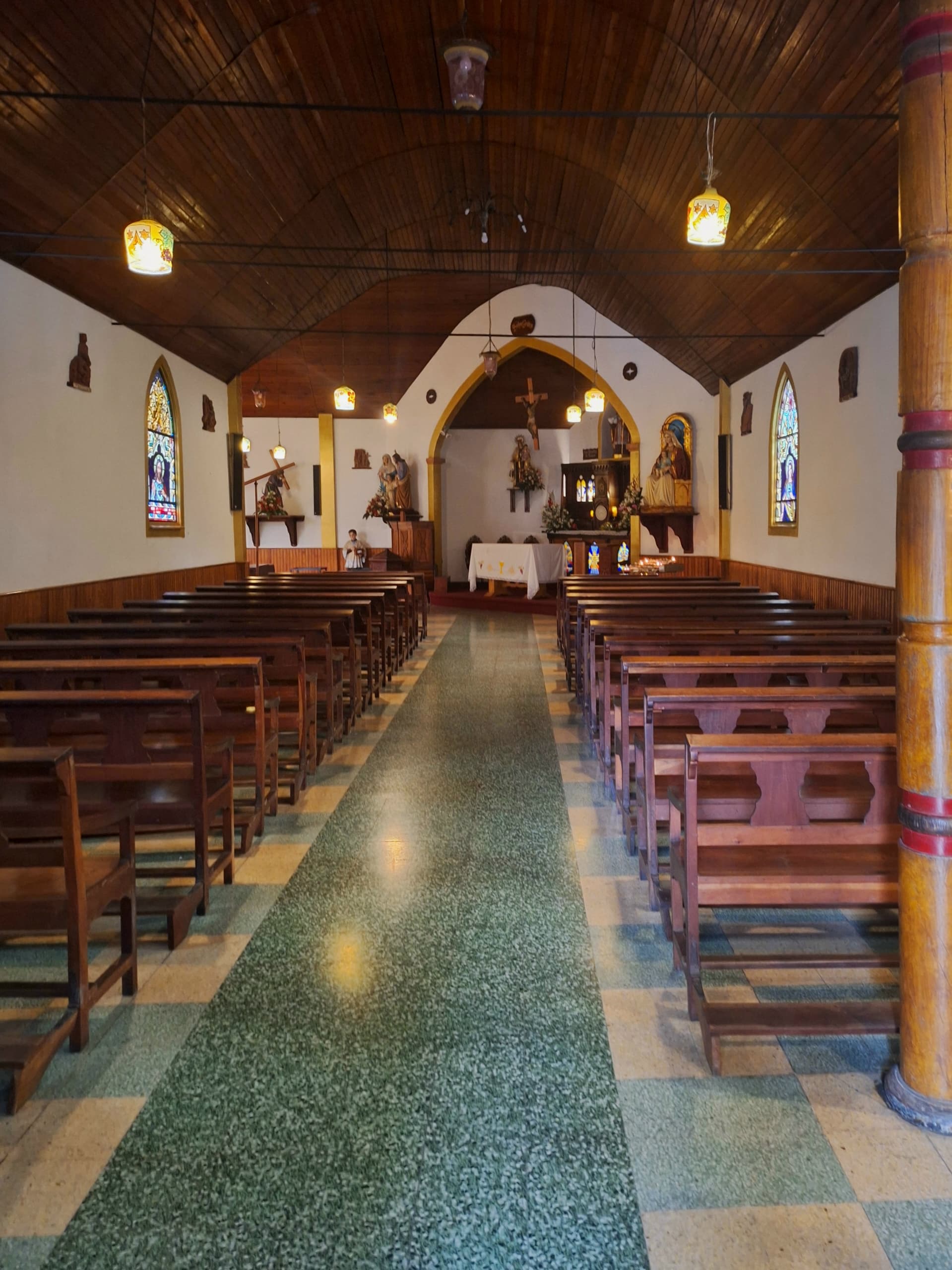 | 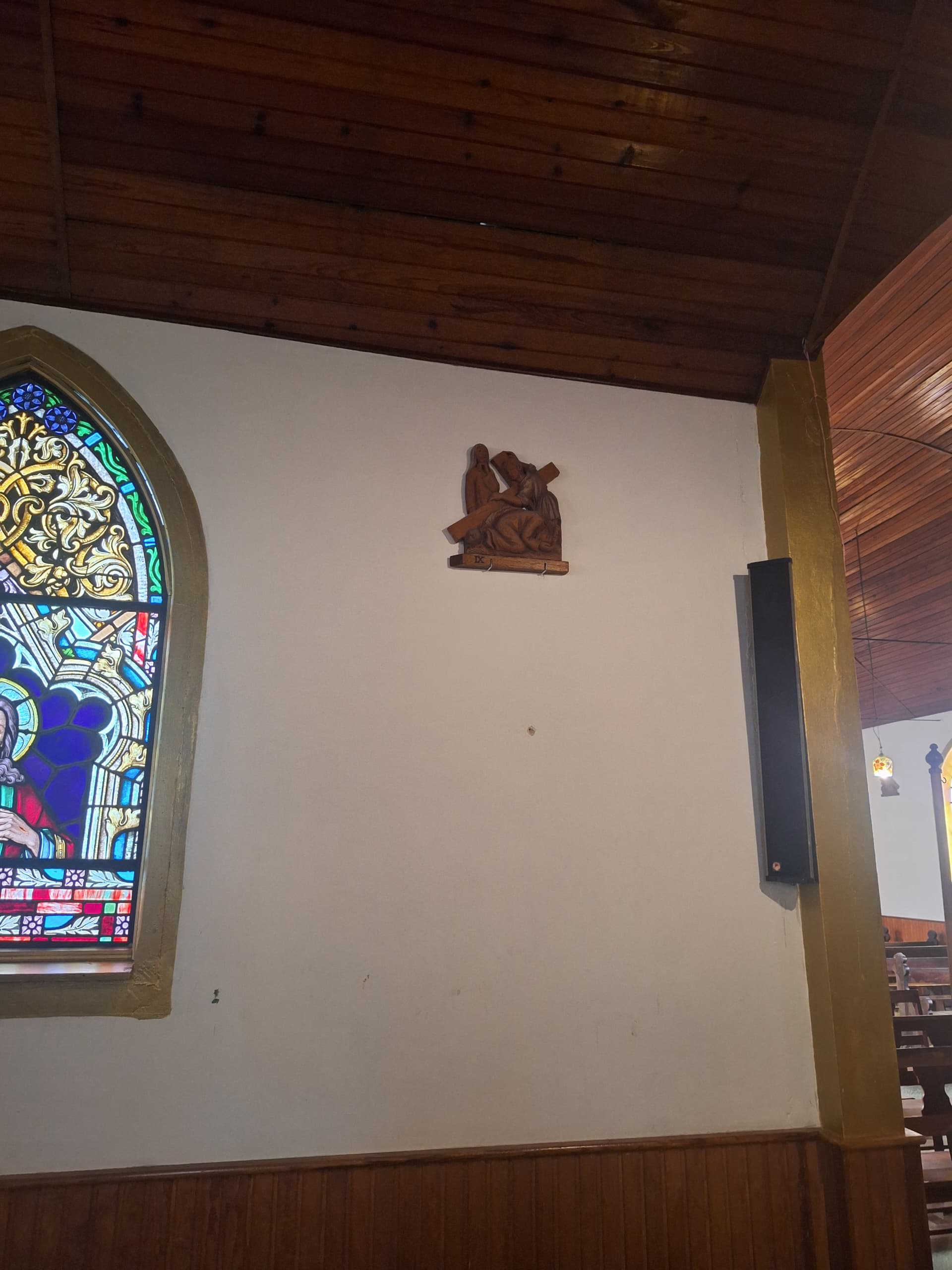 |
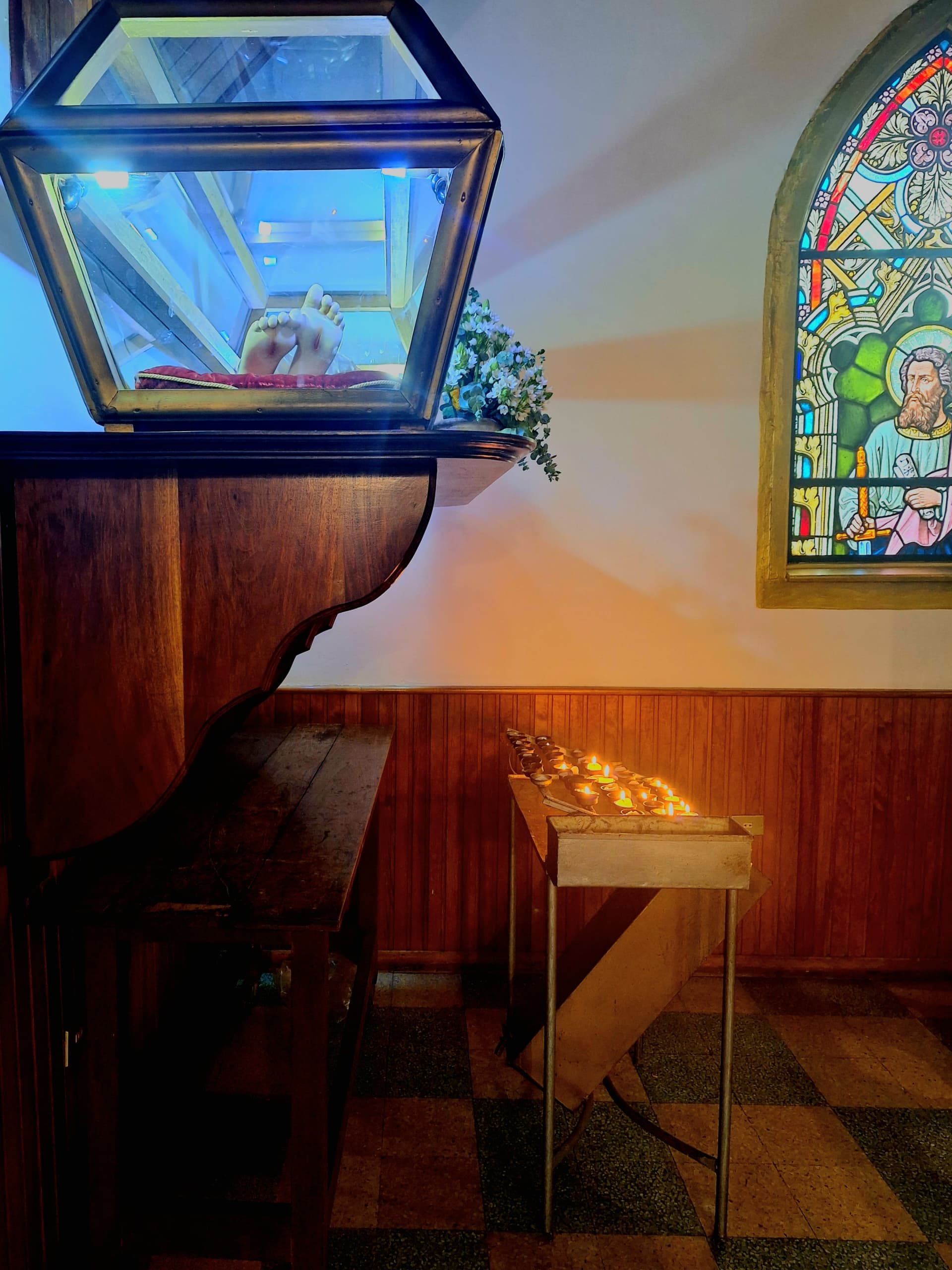 | 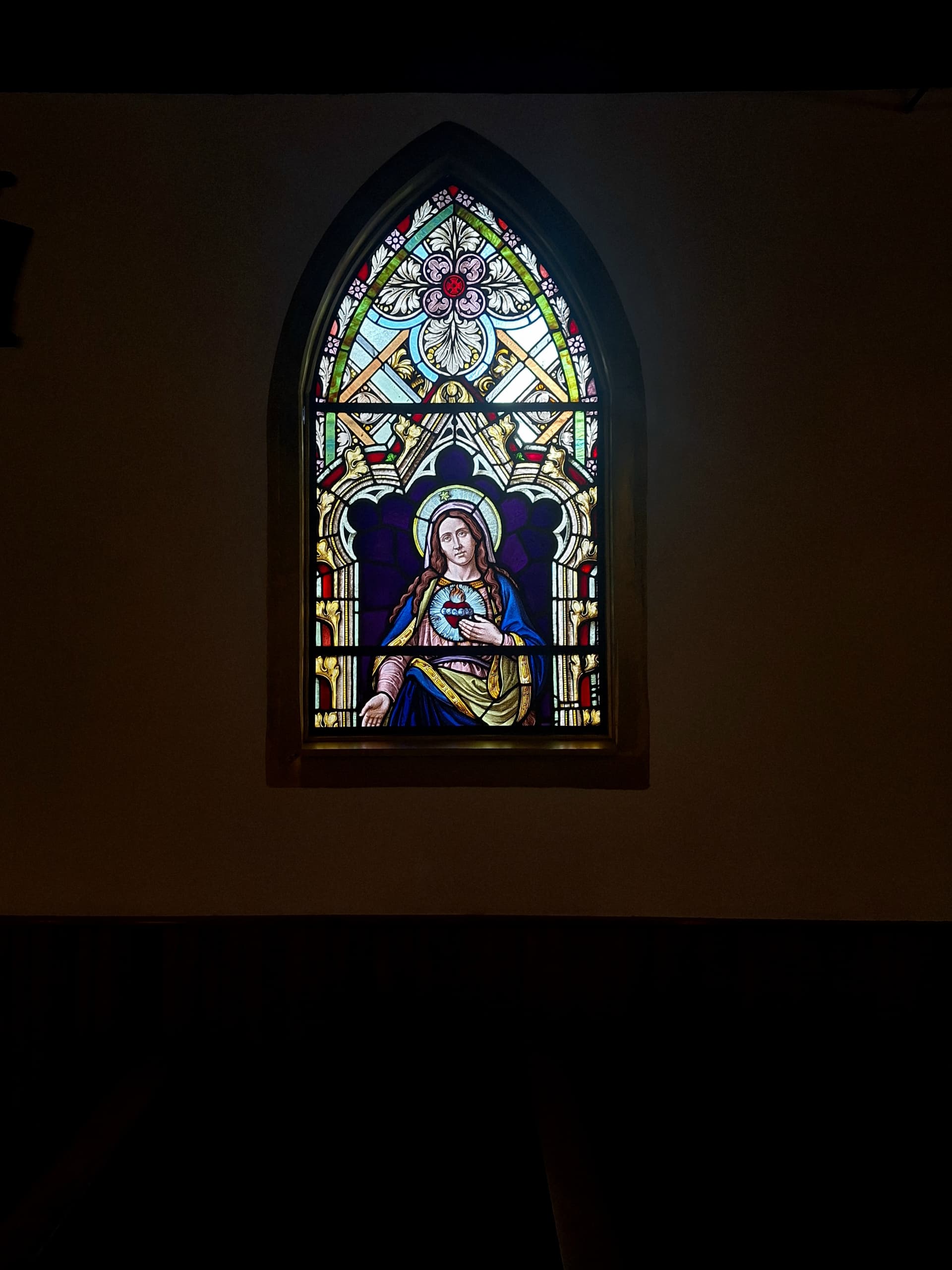 | 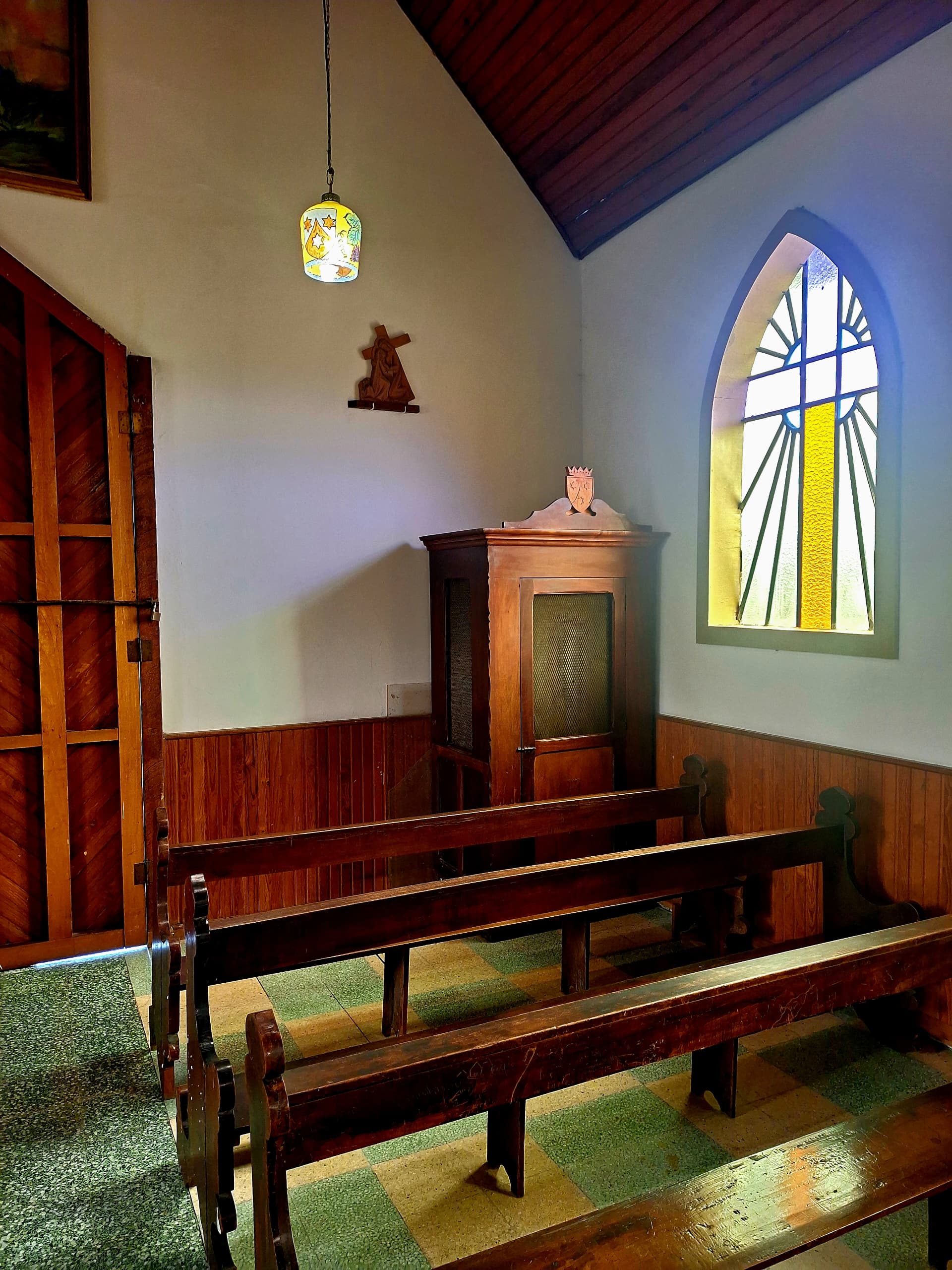 |
As I walked inside, in the center of the church, there was a table, and behind it was a beautiful decoration. Clearly, this is the area where Catholic activities are conducted.
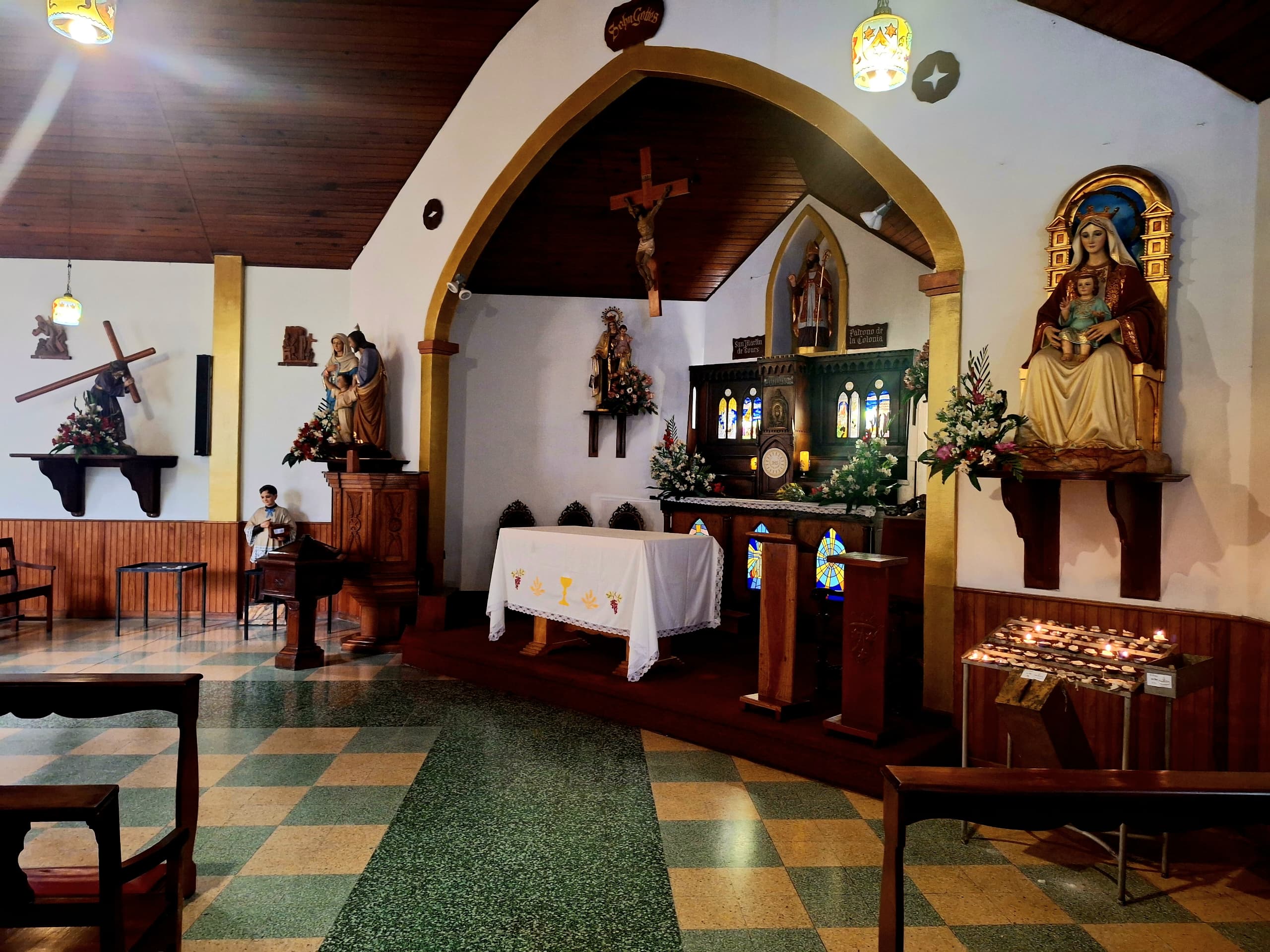
Two aspects that really caught my attention are that some of the lamps in the church had stained-glass windows, and there were several works of art in different positions inside the church. I should point out that this church has an L-shape that was inspired by the churches of Freudenstadt. Also, this is the original church, on one side of it, another church was built with a larger capacity (I did not enter that part).

The Church of Saint Martin of Tours has been a patrimony of Venezuela since 1994, and the reason for this is obvious. It is part of the identity of my country. I am referring to what we Venezuelans are in spite of the situation. In this church, there is architecture, an urban landmark, art, culture, religion and identity. I hope you can visit it. P.S: The last photo is of the new church, which I did not enter.
Original content by @neruel. All rights reserved ©, 2024. Images: Samsung Galaxy A50. Translation: DeepL.
SPANISH VERSION (click here!)
Cuando viajé a la Colonia Tovar en la ciudad de Aragua, Venezuela, tuve la oportunidad de recorrer una de las iglesias más emblemáticas del país. Para saber un poco de mi tour, puede visitar ésta publicación donde escribí sobre ello. Recorrí el casco histórico del icónico pueblo alemán. Para mí uno de los lugares que todos deben visitar es la Iglesia de San Martín de Tours.
La Iglesia de San Martín de Tours destaca por tener una arquitectura ejemplar y que enarbola perfectamente las tradiciones alemanas. La fachada de la iglesia es de color blanco con un decorado de franjas negras.
Venezuela siempre ha tenido un lazo sólido con los alemanes. El territorio que una vez perteneció al Rey de España también estuvo en manos de los alemanes. De allí el gran lazo. Además, esto provocó que Venezuela tuviera una fe católica preponderante. Los europeos siempre han tenido mucha importancia en todo el país.
La primera iglesia en éste lugar fue construida en el año 1843, pero como estaba en condiciones de deterioro, fue reconstruida 1862 por los alemanes que se radicaron en los alrededores (ellos usaron sistema fachwerk para construir la nueva iglesia). Algo muy peculiar, es que posteriormente sufrió varias modificaciones hasta llegar al estado que muestro en éste post.
Ésta iglesia para mí como urbanista tiene varios elementos importantes para Venezuela. Primero, es uno de los hitos más importantes del casco histórico de la Colonia Tovar, y segundo es patrimonio cultural del país. Significa que es un espacio sagrado y relevante de nuestra cultura. Me refiero, a qué forma parte de la identidad de Venezuela.
Frente a la iglesia se encuentra la Plaza Bolívar (en Venezuela todas las ciudades y pueblos tienen una plazoleta dedicada al libertador). A pesar de que Simón Bolívar no fue explícitamente el fundador de la forma republicana de Venezuela; fue un actor clave, importantísimo y que posteriormente logró la independencia del país. Por eso, los venezolanos respetamos preponderantemente al arquitecto de la independencia.
Al entrar a la iglesia, lo primero que noté fue dos altares. Uno hecho a la virgen y otro a José Gregorio Hernández. Ambas estaban rodeadas de velas y un buzón (creo que era de ofrendas). Yo no soy católico, pero respeto la religión e historia del país.
Luego de esto había una puerta con un aviso que decía: "Nadie es tan santo que no necesita entrar. Nadie es tan pecador, que no pueda entrar. La iglesia no se va a caer porque entres en ella. Ni los santos van a salir corriendo. ¡Dios siempre te espera con los brazos abiertos!" Éste aviso para mí fue muy peculiar. Además, detrás de una de las dos puertas de la entrada había una cesta con papeles con versículos de la biblia. ¡Más peculiar aún!
Al entrar a la capilla de la iglesia, encontré varios elementos que destacan dentro del interiorismo de ella. Un recipiente hecho de mármol lleno de agua y viejos lampadarios llenos de velas.
Algo que me gustó mucho fue un hermoso vitral católico. Los colores en ése vitral eran preciosos. Dependiendo el ángulo en que lo miraras, la luz reflejaba dentro de la iglesia de diferentes formas.
Cerca de la entrada también había una figura de un cristo crucificado. Cerca de él había otro vitral que hacía ver increíble ése espacio.
En una de las paredes había una perforación y se encontraba una escultura. No sé de quién se trataba; pero estaba iluminada. Como he dicho, no soy católico, pero siempre mantengo el respeto.
Al ir entrando en la iglesia pude notar que toda está construida con madera; sin embargo, se notaba que en la parte superior había una pared de bloques en obra gris. Pregunté al guía posteriormente cuando estaba haciendo el tour y él me indicó que fue una remodelación para construir las torres. La primera se construyó en 1981 y la otra dos años después en 1983; pero debo resaltar que estas eran de madera originalmente.
Hace un par de años hubo un escándalo a nivel nacional porqué la iglesia tenía termitas y la estructura necesitaba ser renovada. No había nadie dentro al que pudiera preguntar sobre la renovación.
El interior de la iglesia estaba muy bien conservado. Había una plena armonía entre los bancos, las lámparas, las paredes blancas, los vitrales y el color del techo. Lo único que no me gustaba era el color de la cerámica del piso (no sé cuántos años tenía).
Al adentrarme, en el centro de la iglesia había una mesa, y detrás de ella una decoración hermosa. Claramente, es el área donde se dirigen las actividades católicas.
Dos aspectos que me llamaron mucho la atención son que algunas lámparas de la iglesia tenían vitrales y había varias obras de arte en distintas posiciones en el interior de ella. Debo destacar que esta iglesia tiene forma de L que se inspiró en las iglesias de Freudenstadt. Además, esta es la iglesia original, a un lado de ella, se construyó una adicción de otra iglesia con mayor aforo (no entré a esa parte).
La Iglesia de San Martín de Tours es patrimonio de Venezuela desde el año 1994 y la razón de ello es evidente. Es parte de la identidad de mi país. Me refiero a lo que somos los venezolanos a pesar de la coyuntura. En esta iglesia, hay arquitectura, un hito urbanístico, arte, cultura, religión e identidad. Espero que puedas visitarla. Pd: La última foto es de la nueva iglesia, a la que no entré.
Contenido original de @neruel. Todos los derechos reservados ©, 2024. Imágenes: Samsung Galaxy A50. Traducción: DeepL.
Posted Using InLeo Alpha